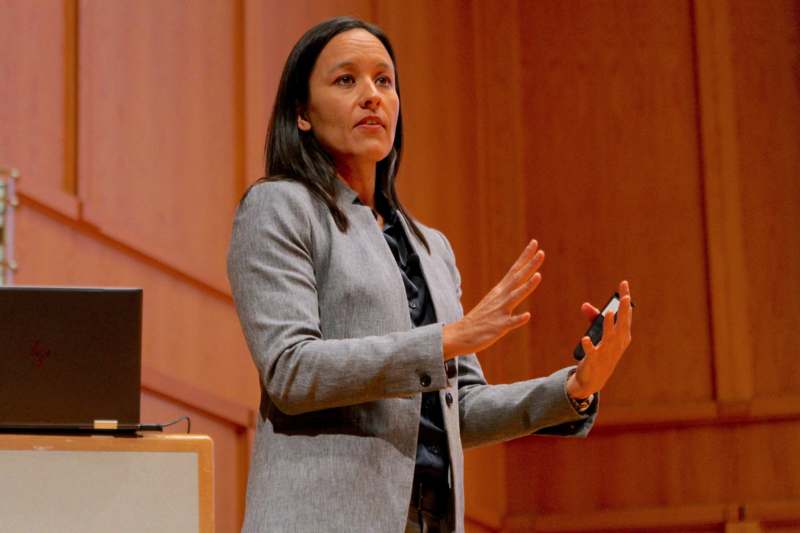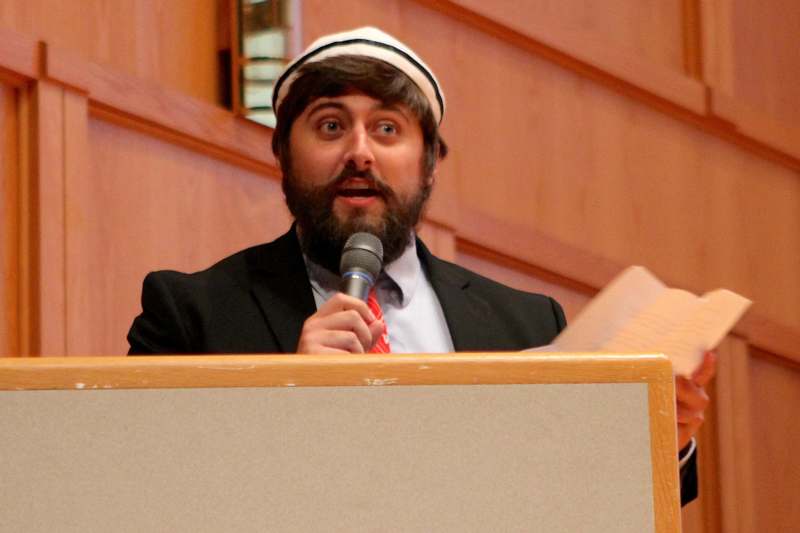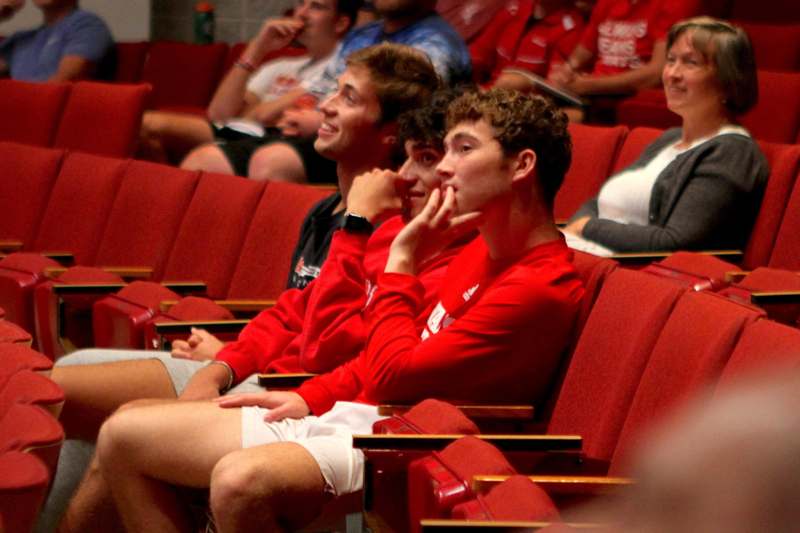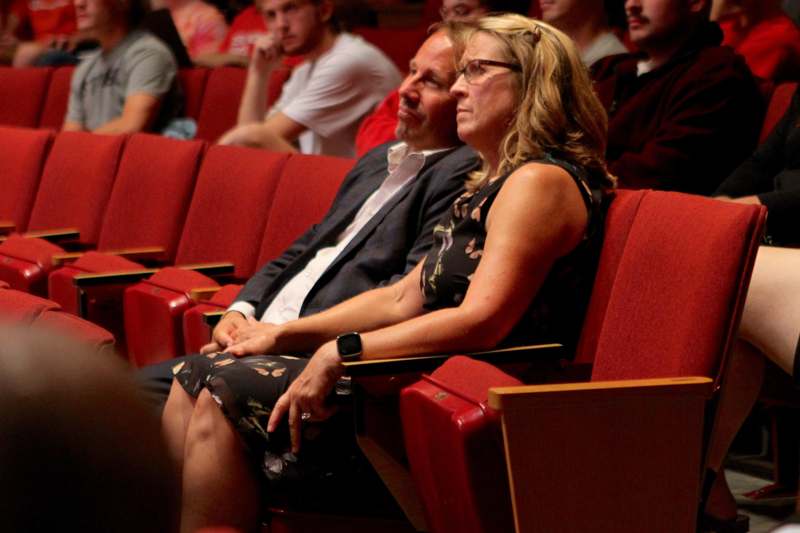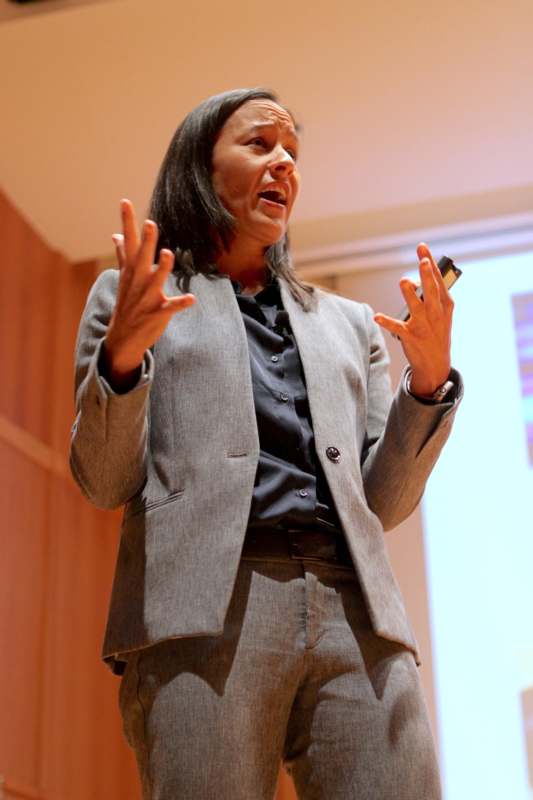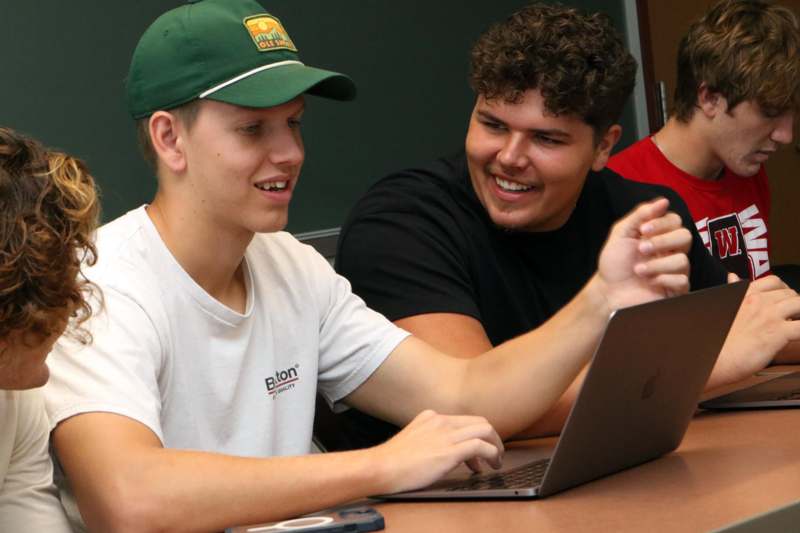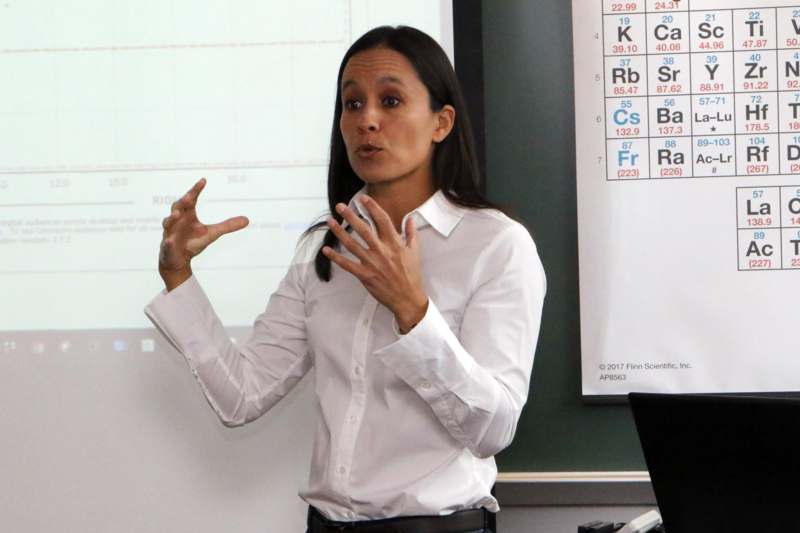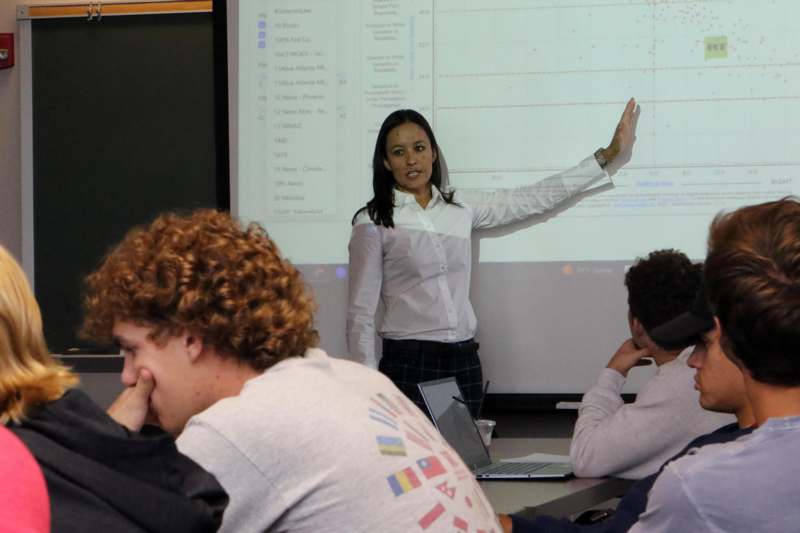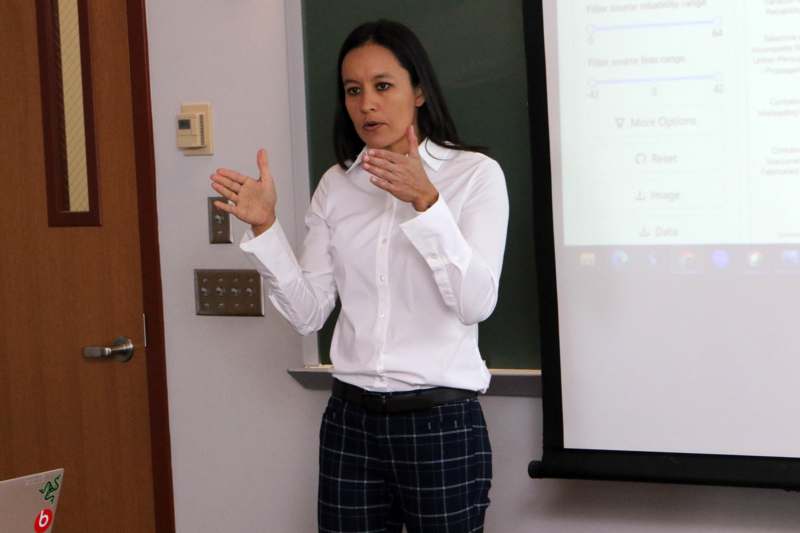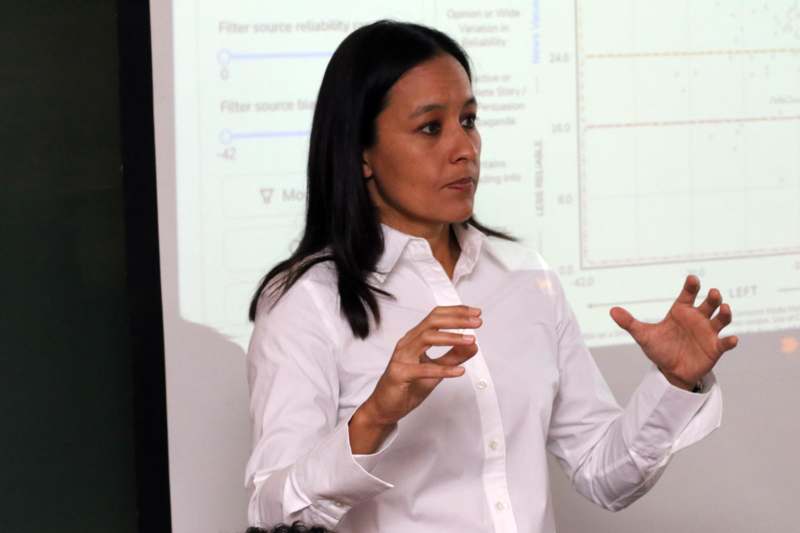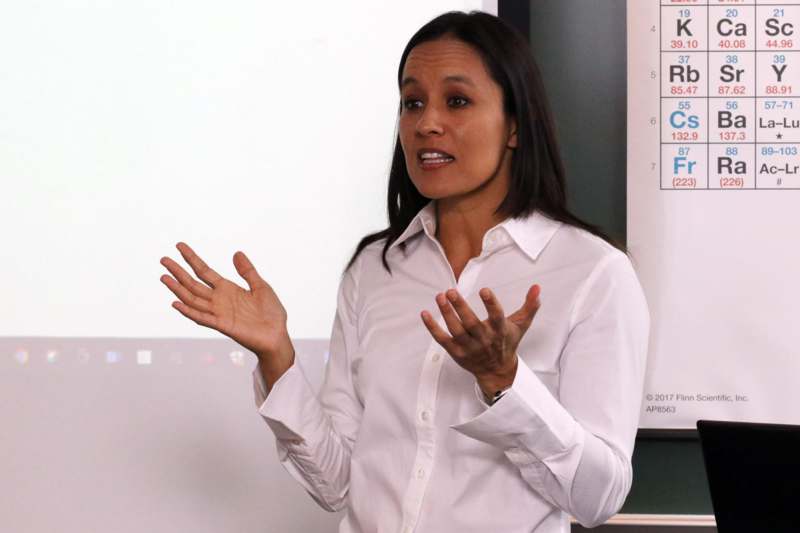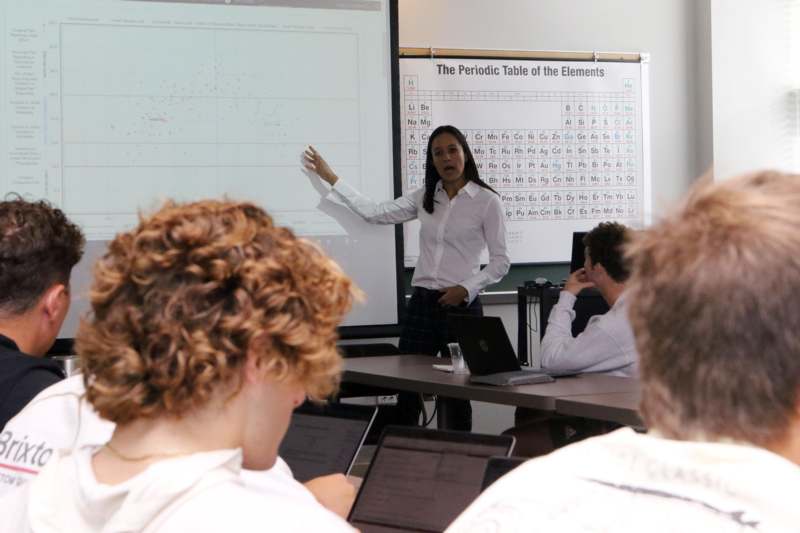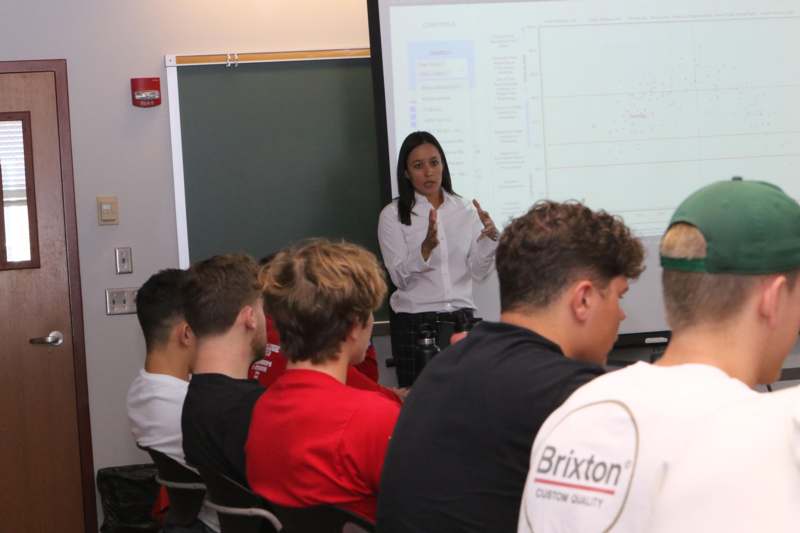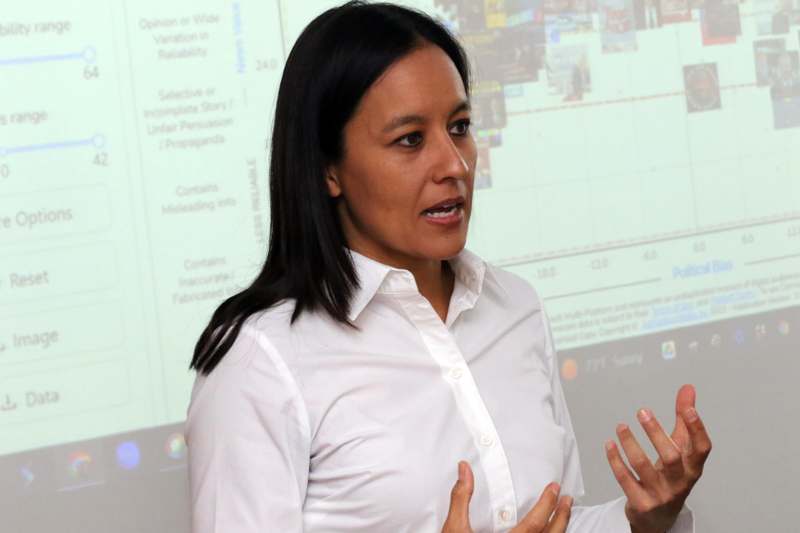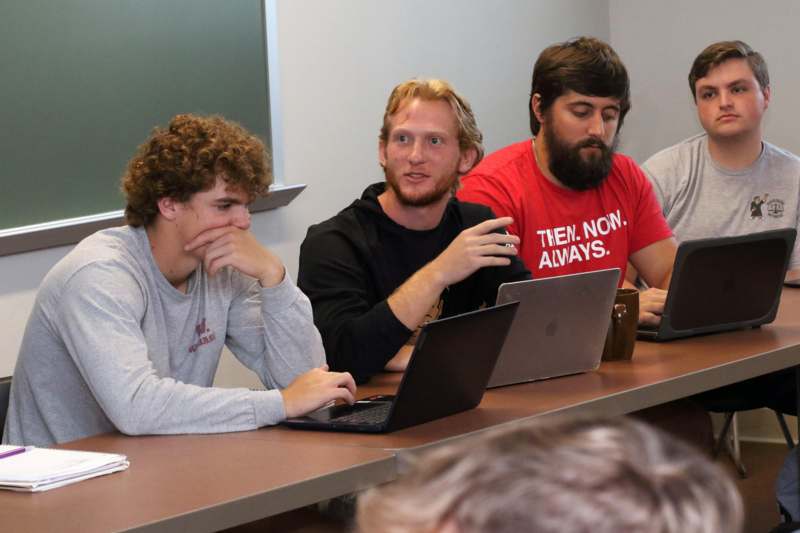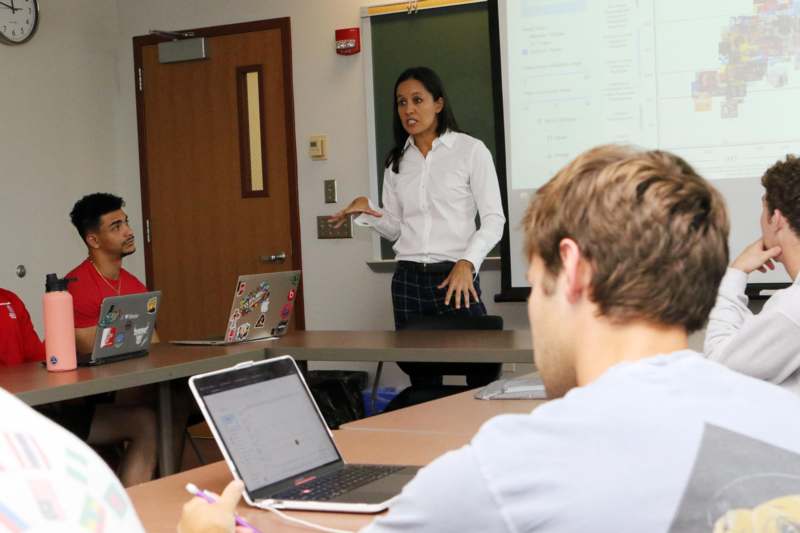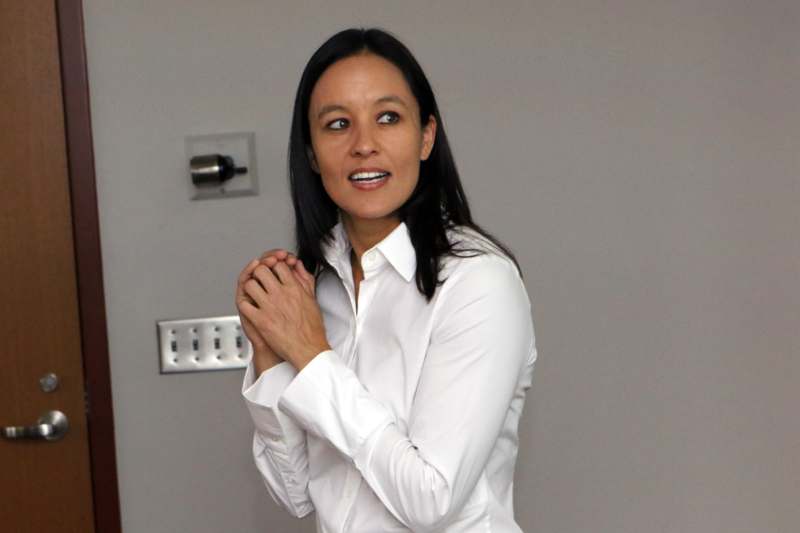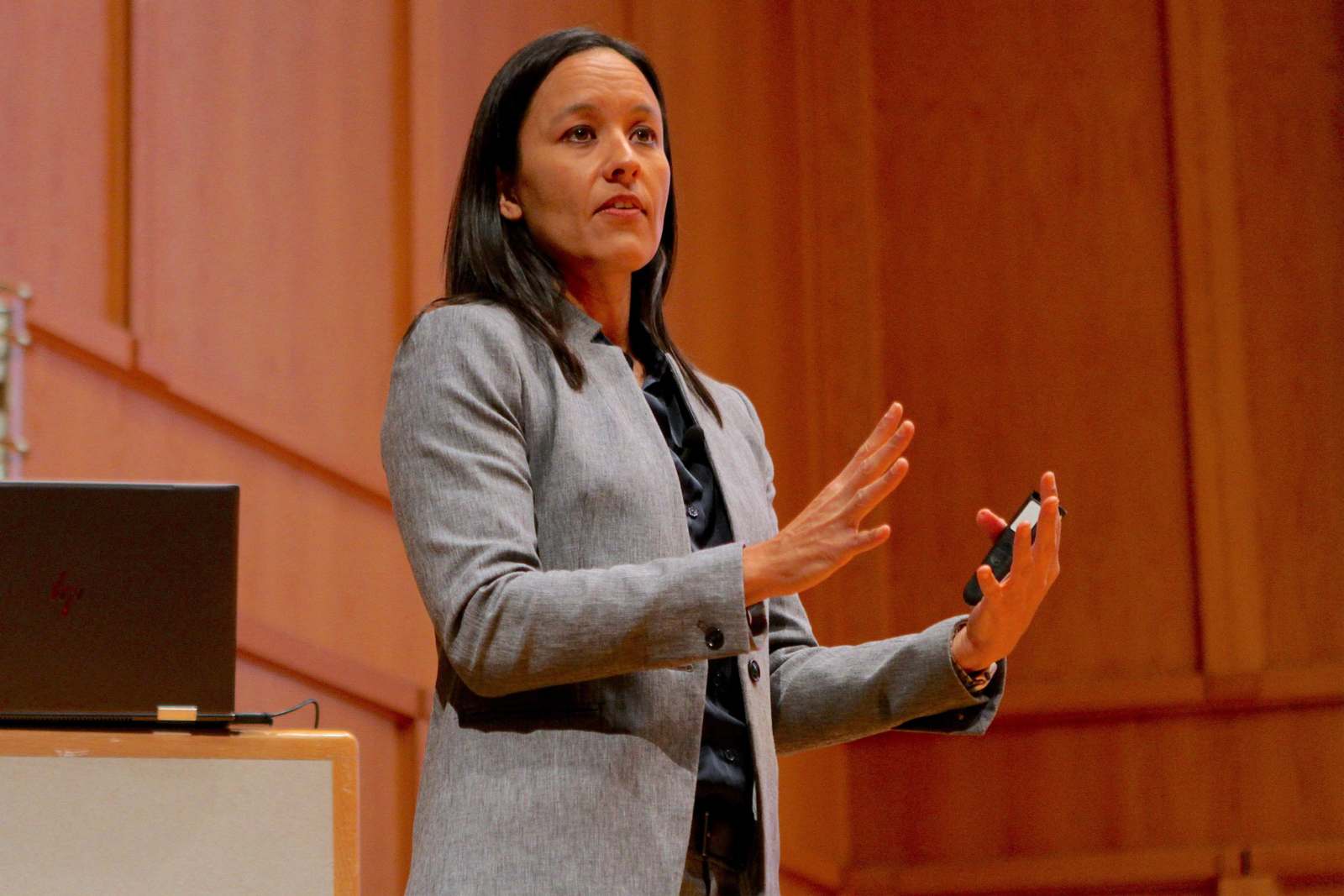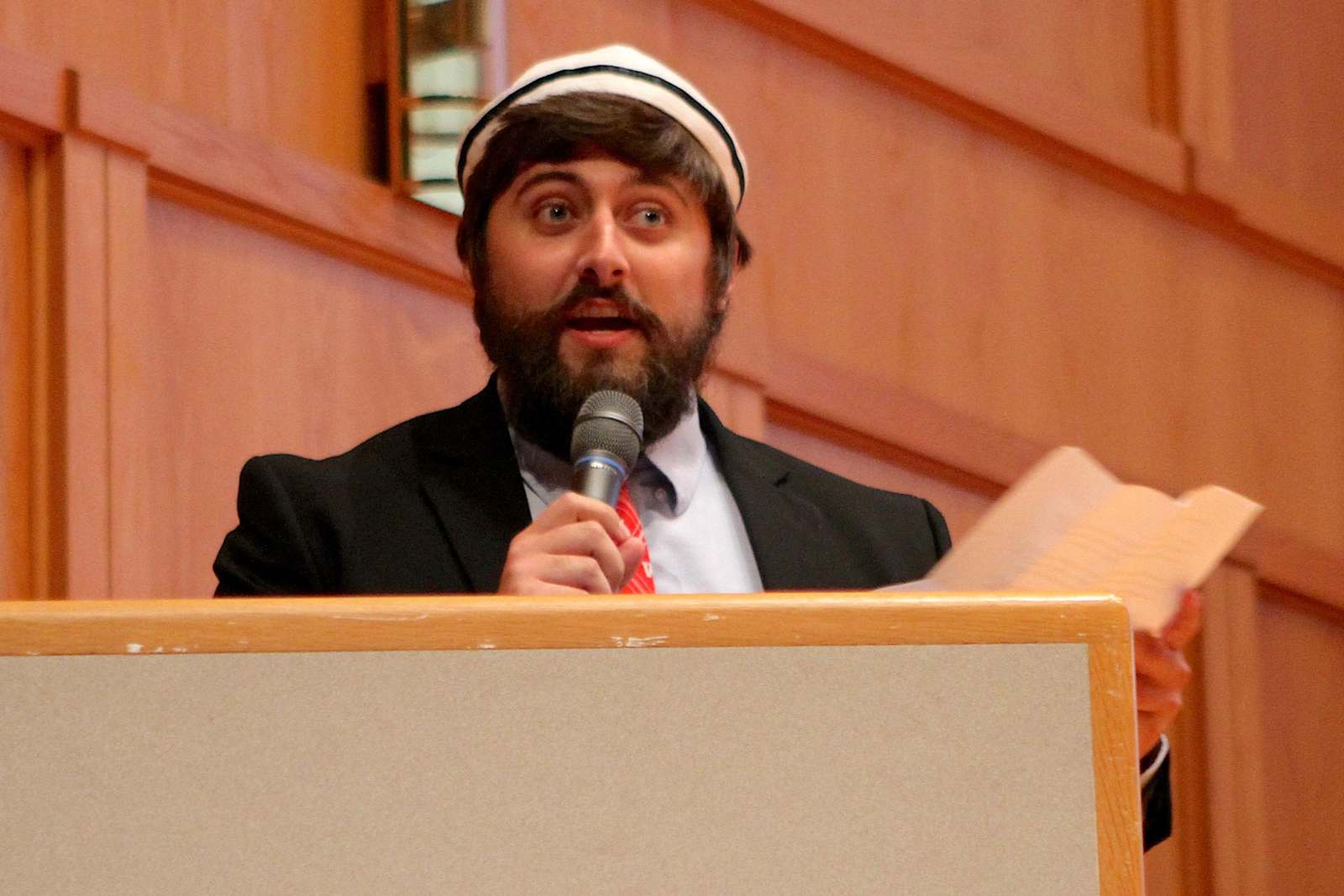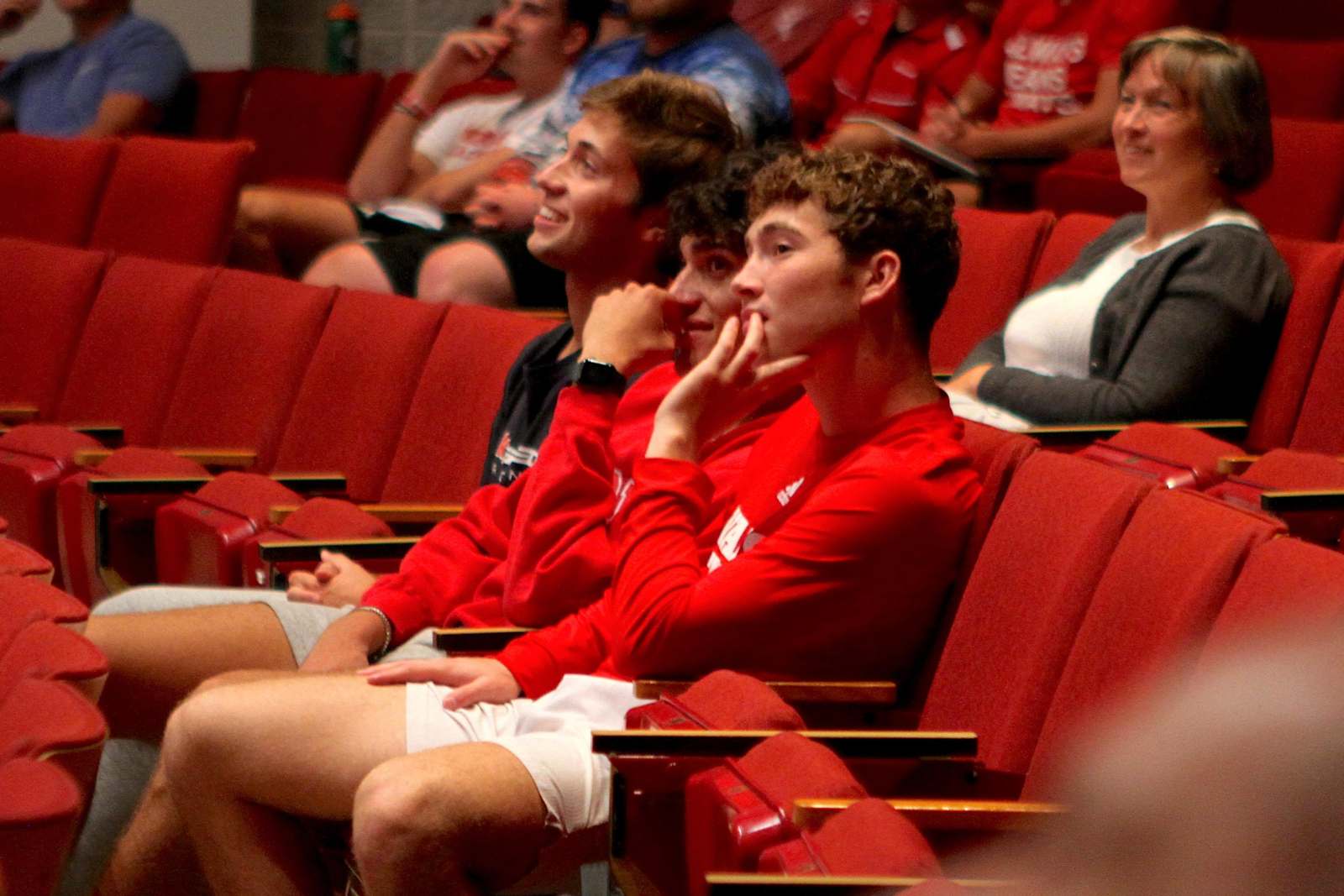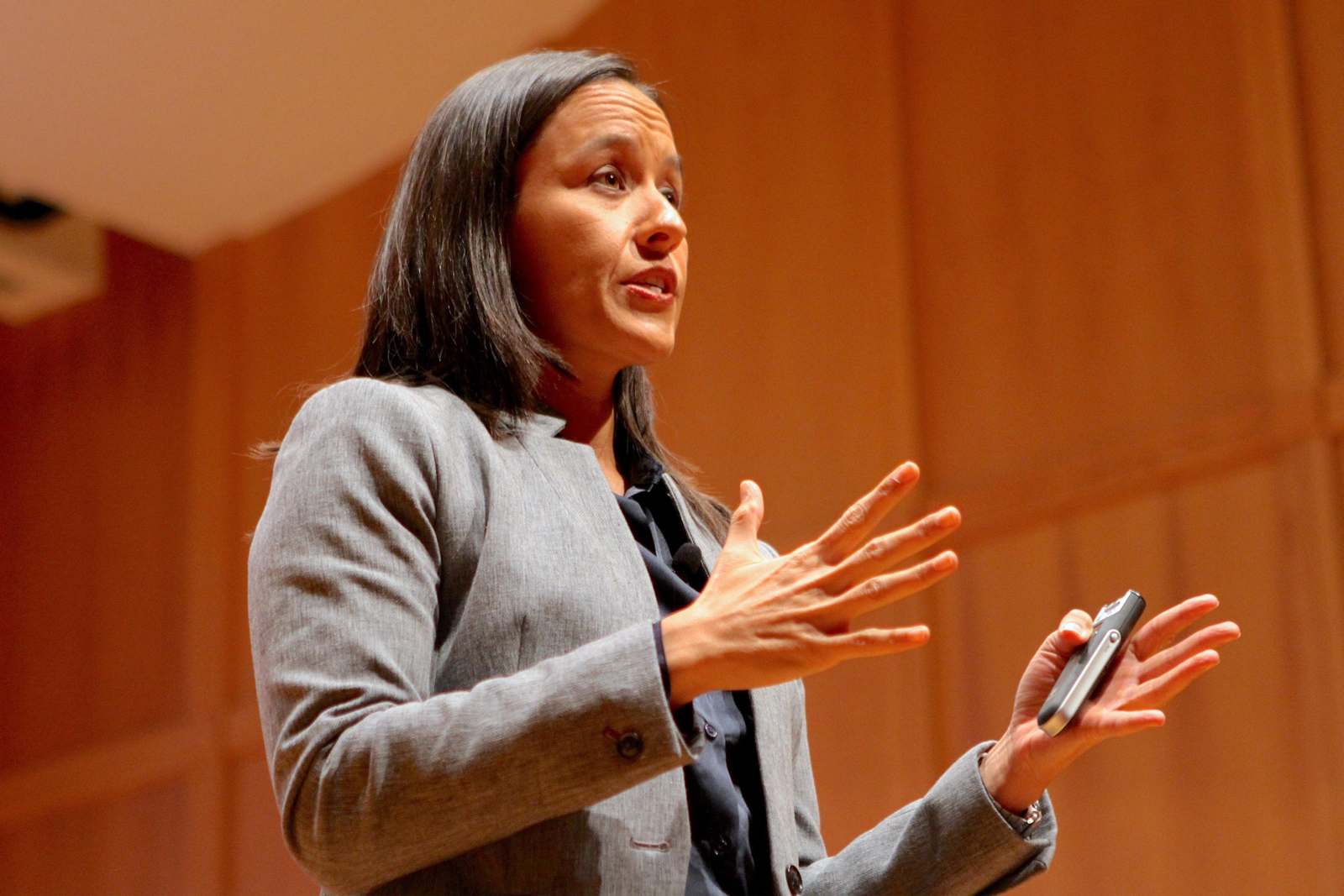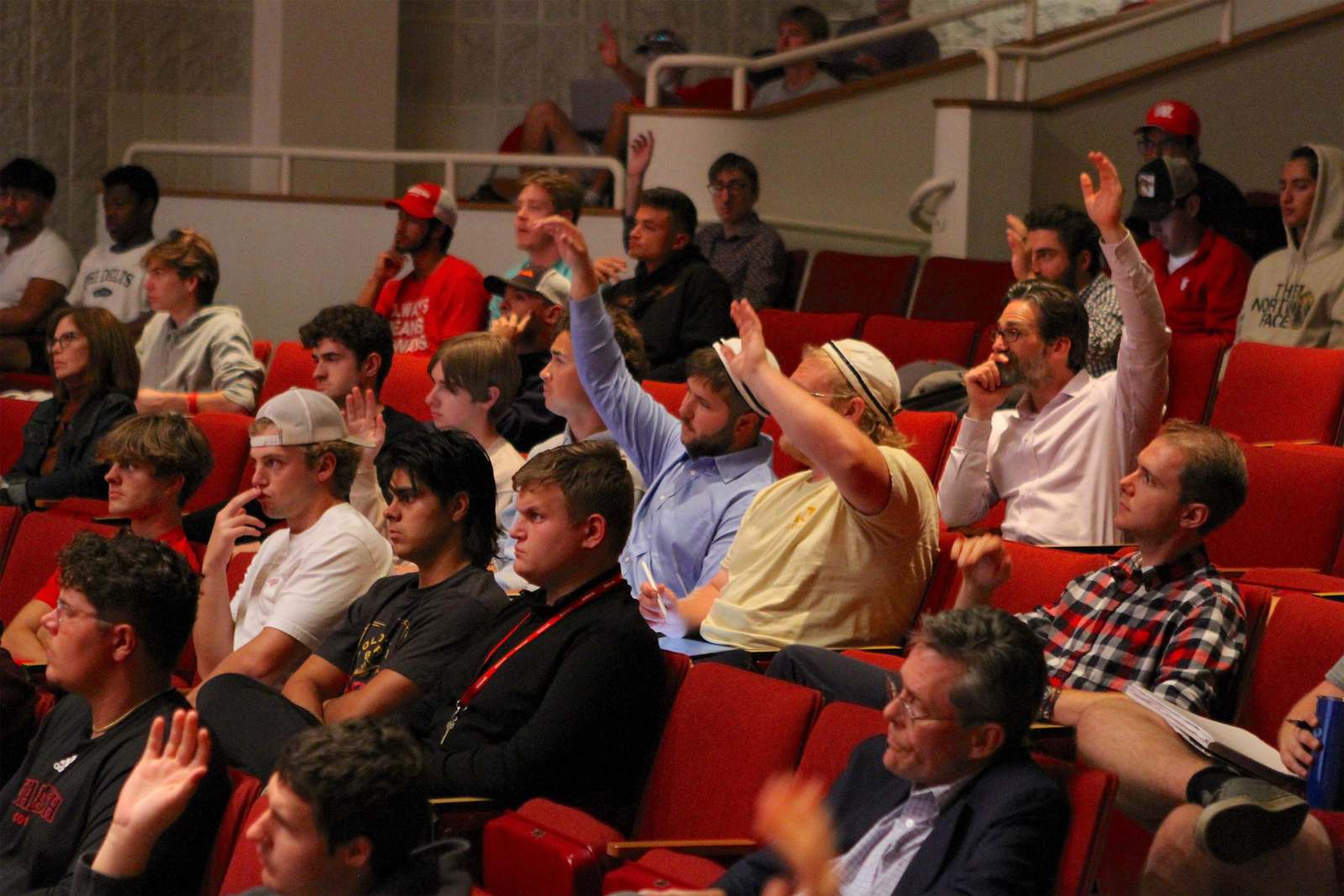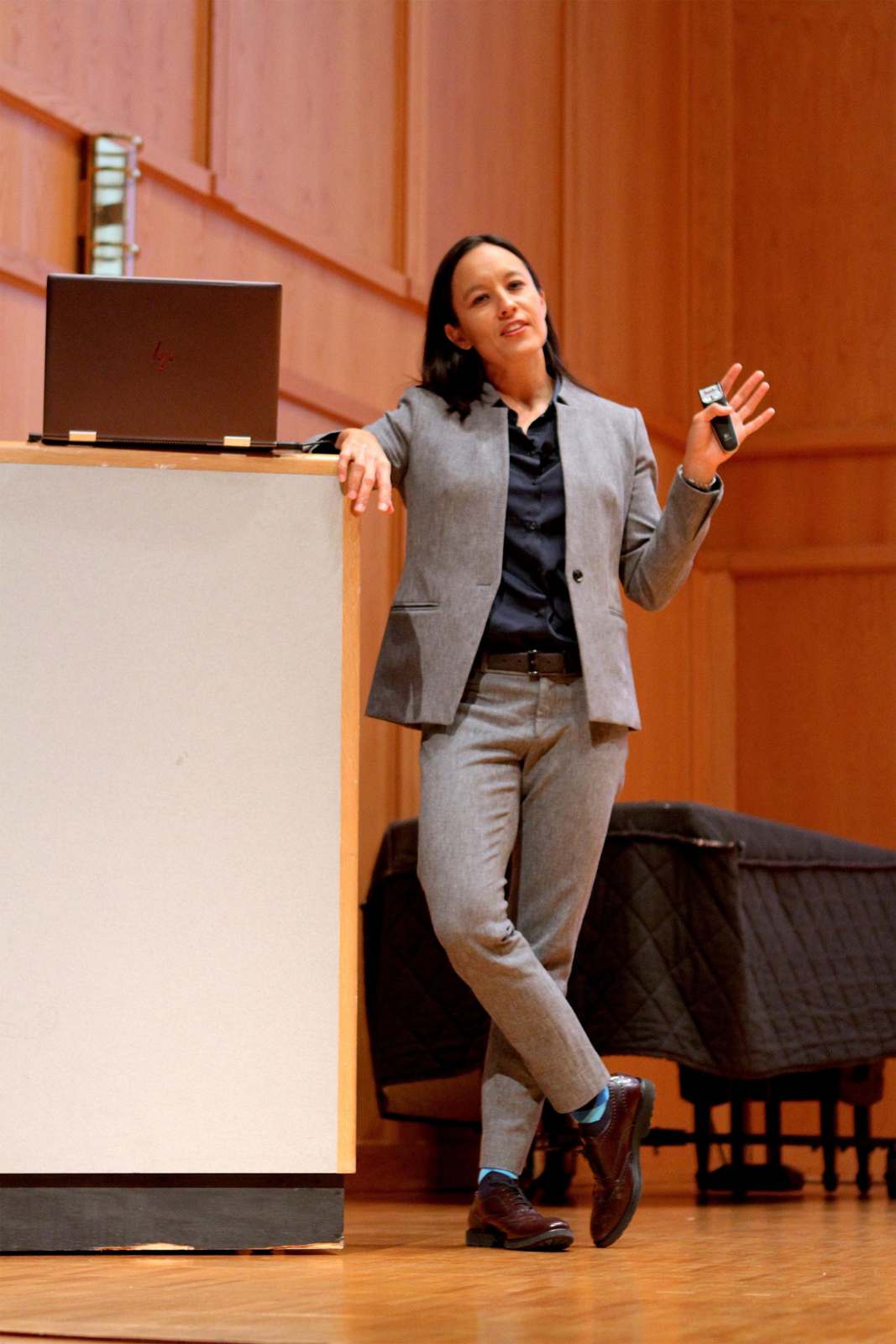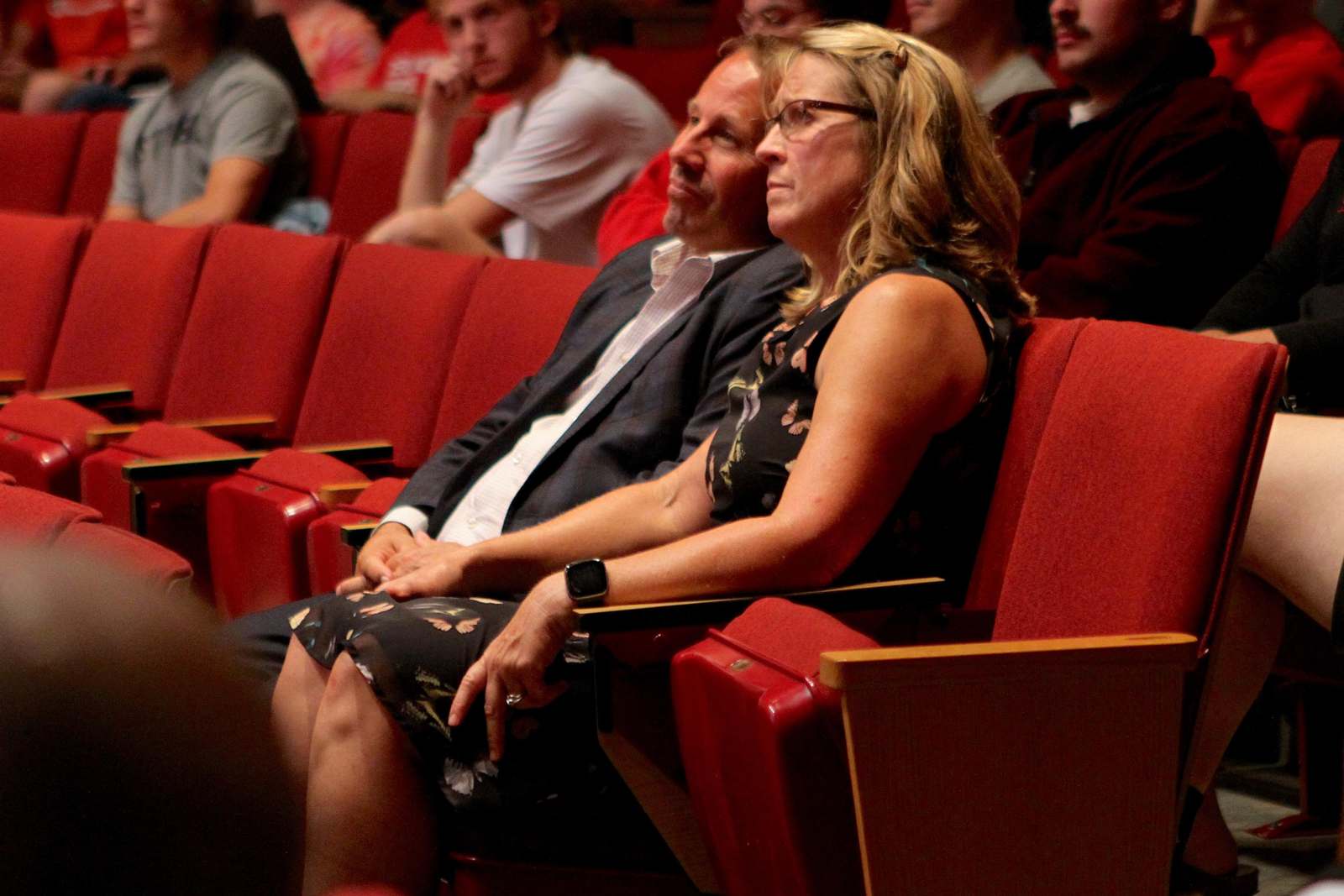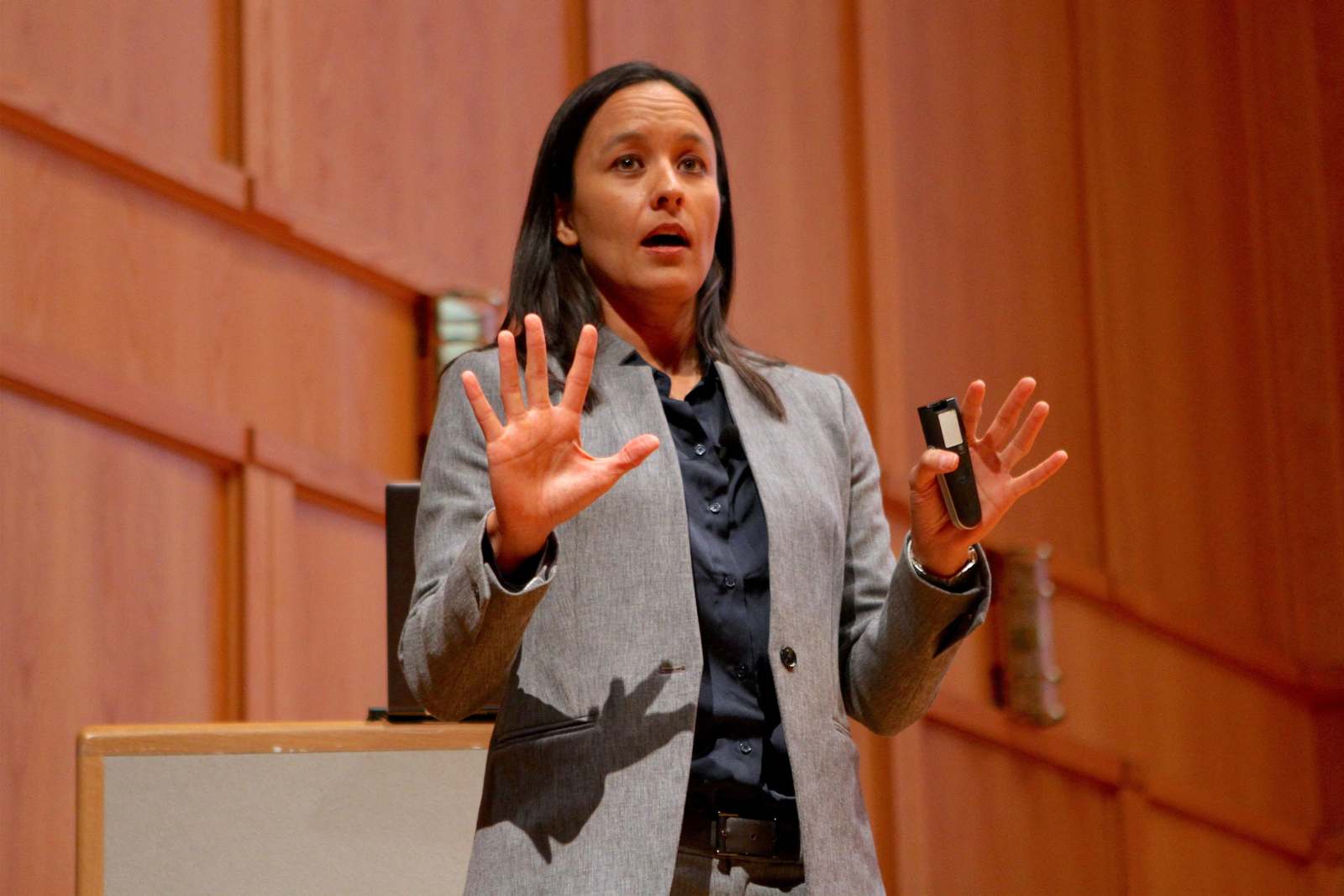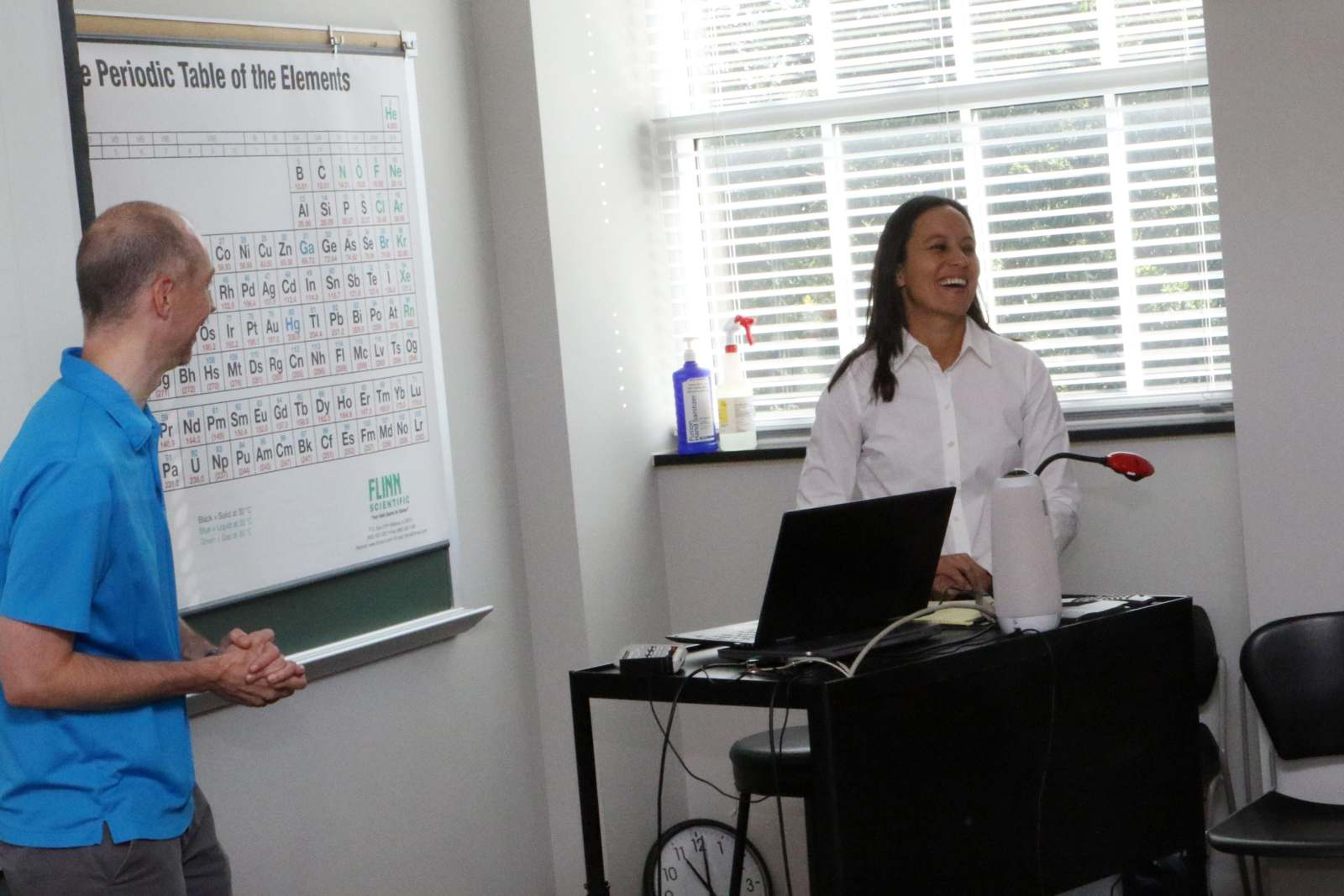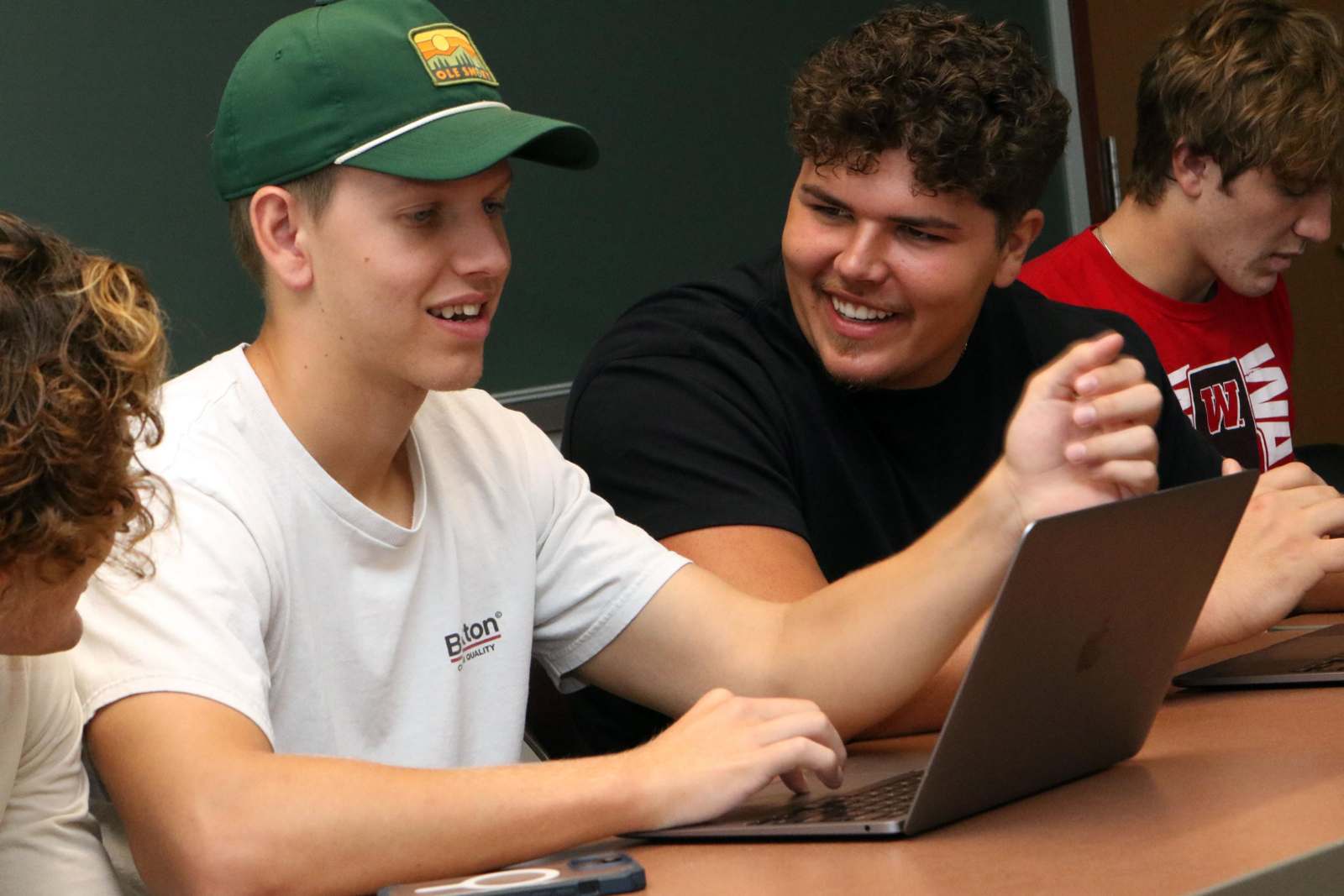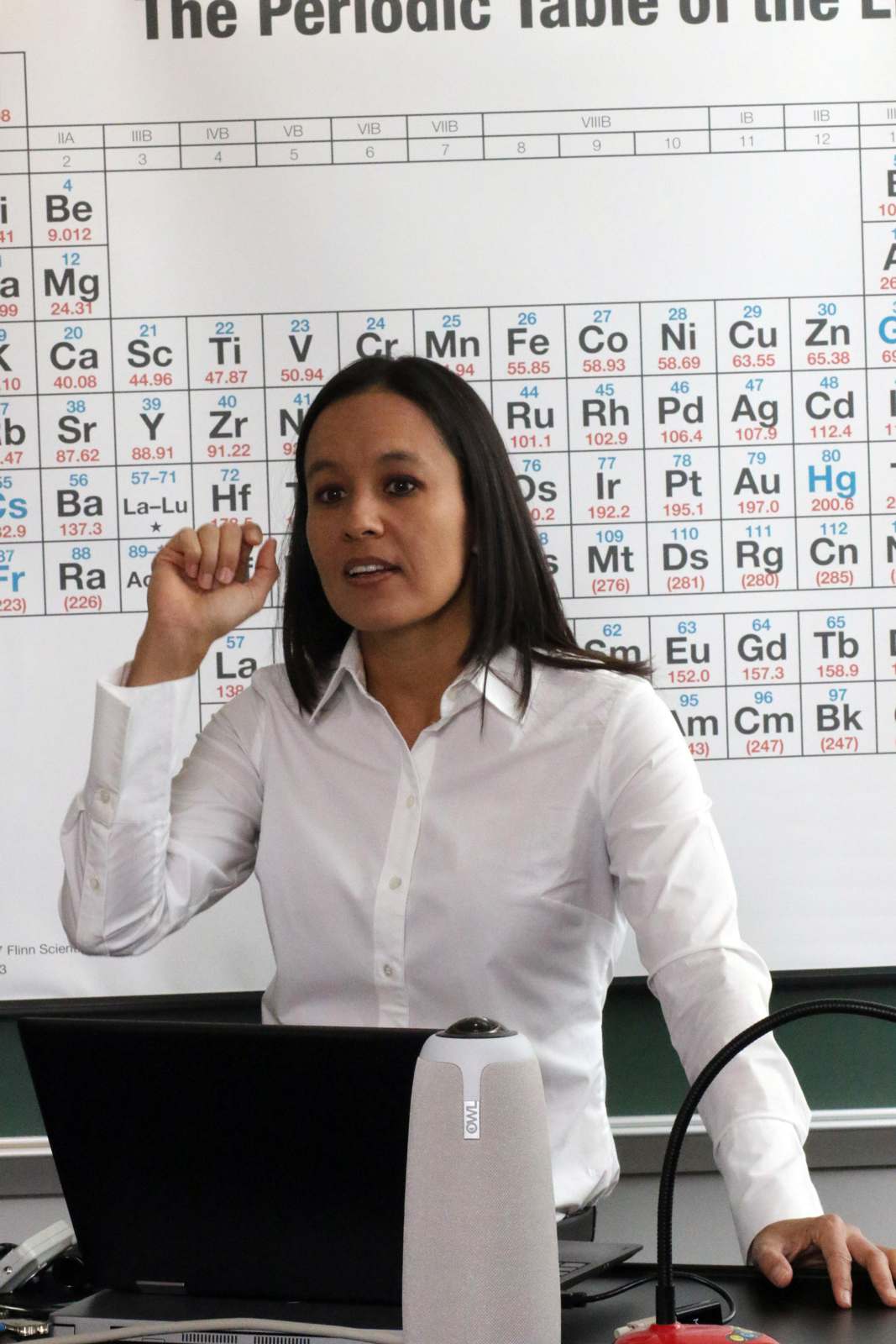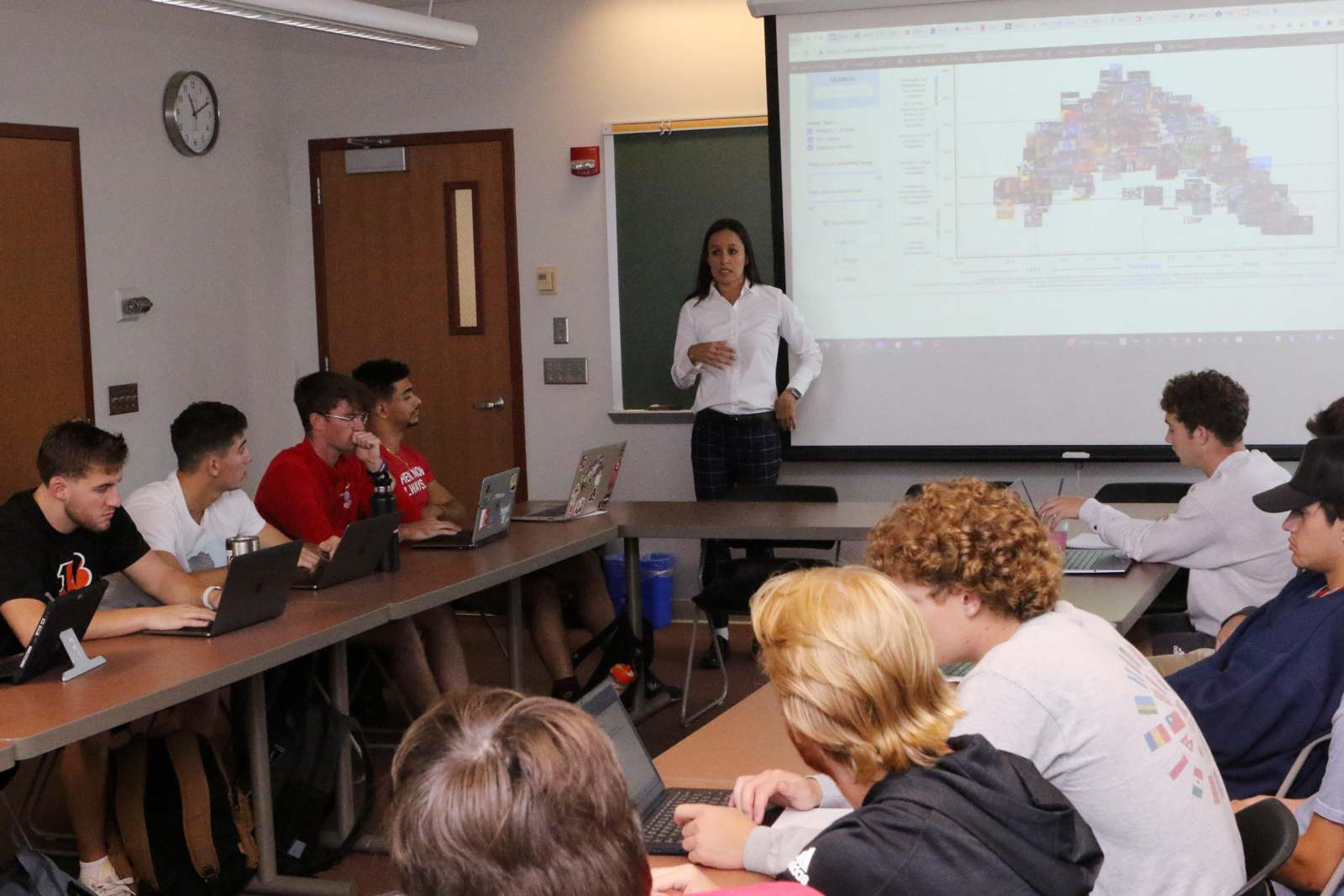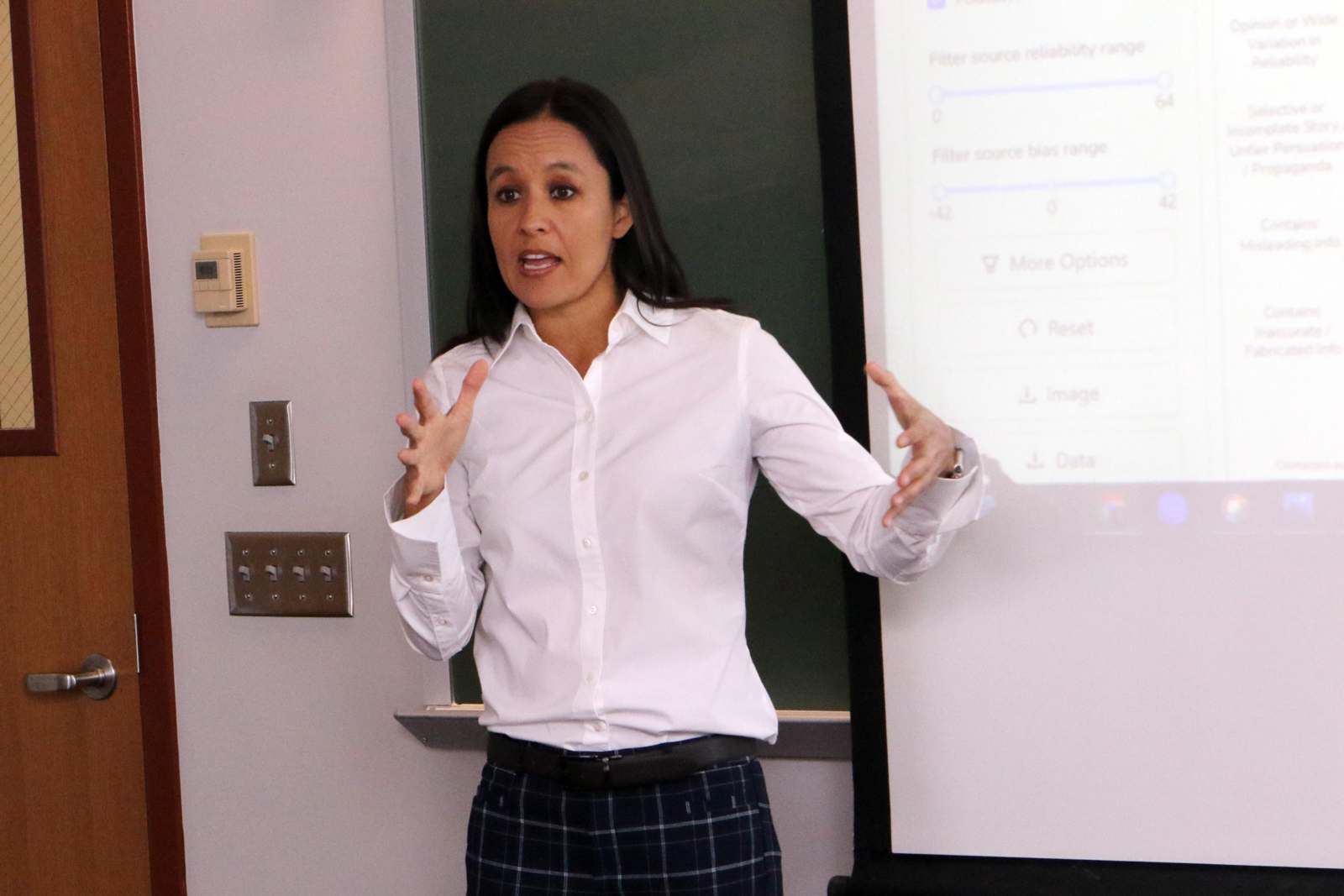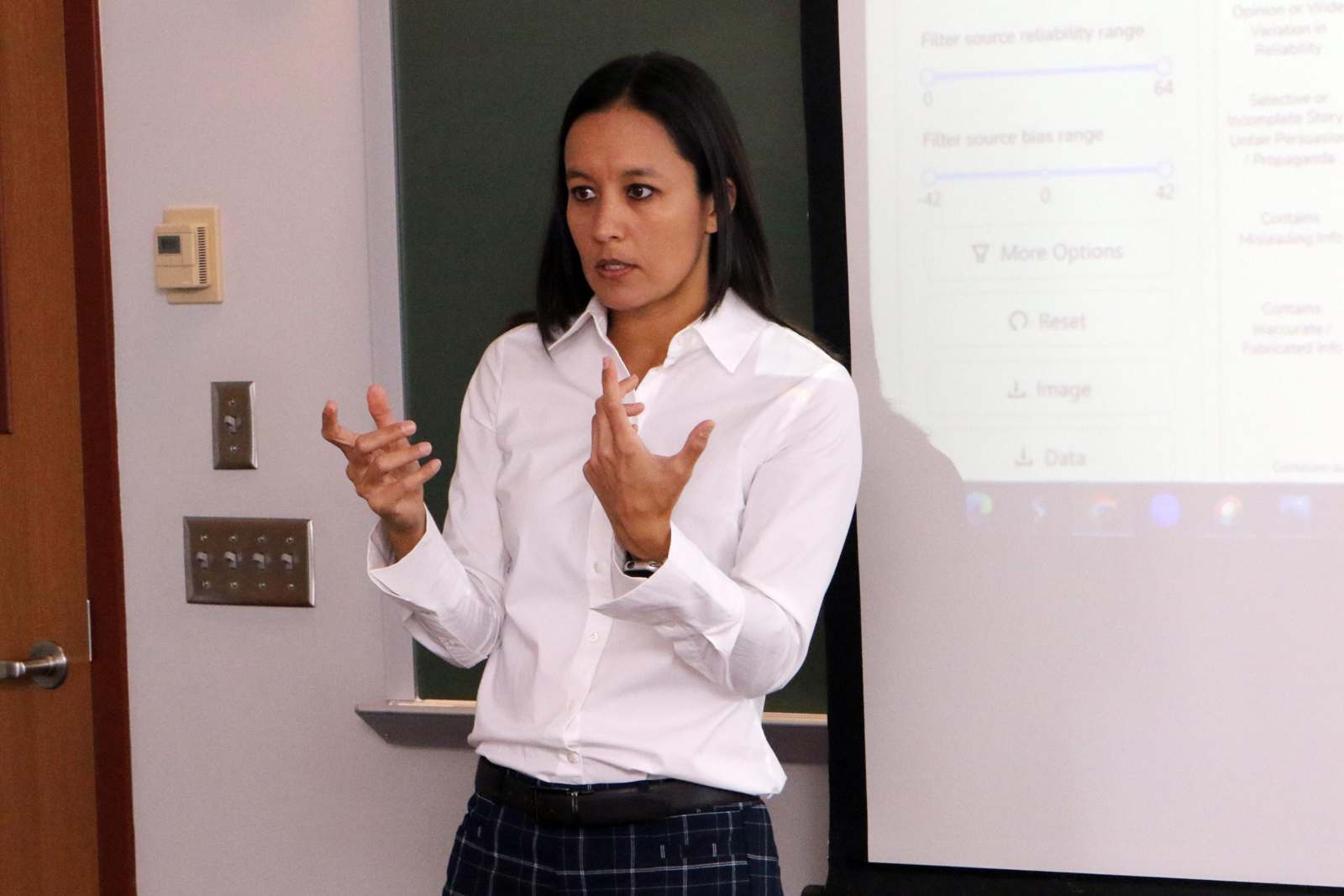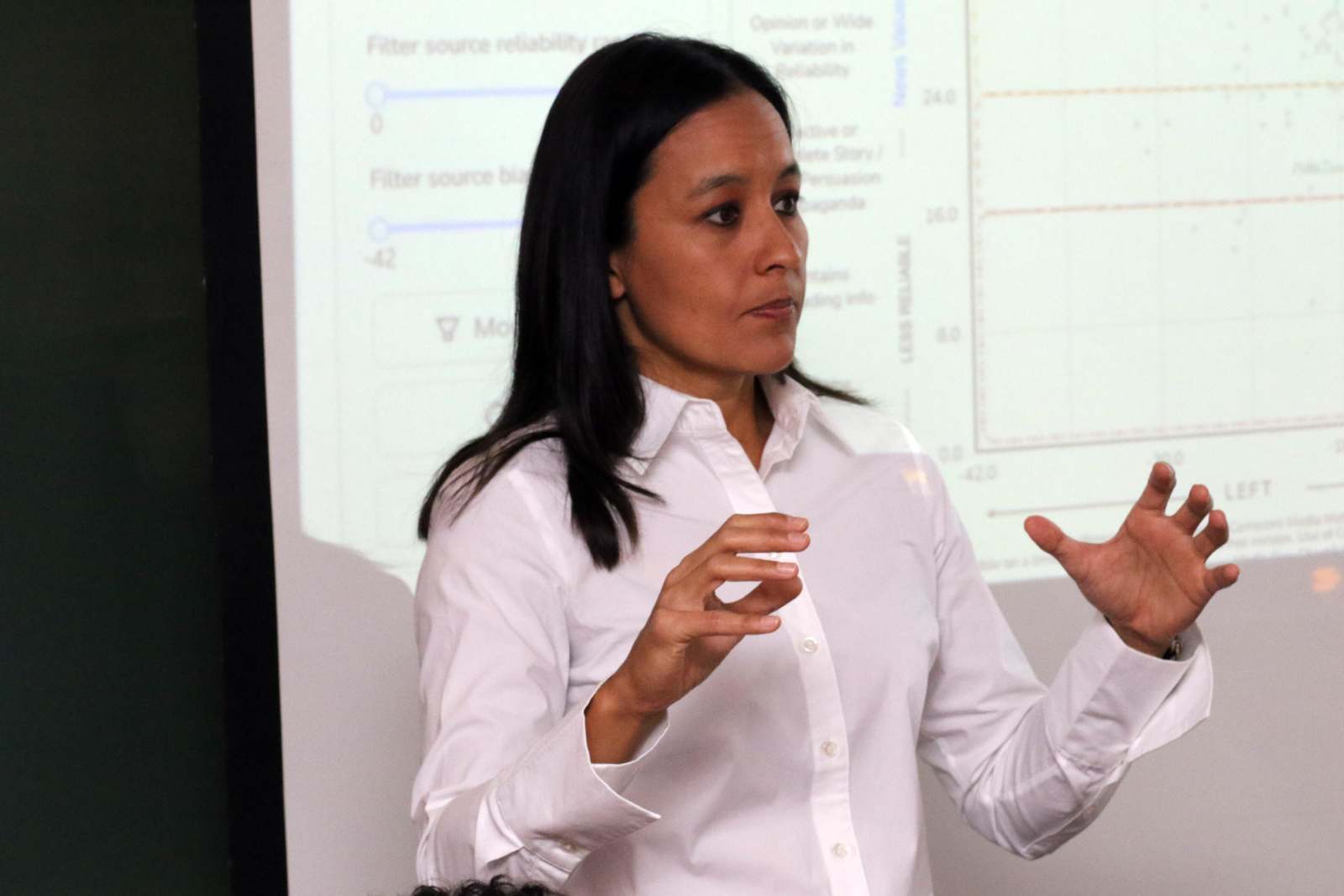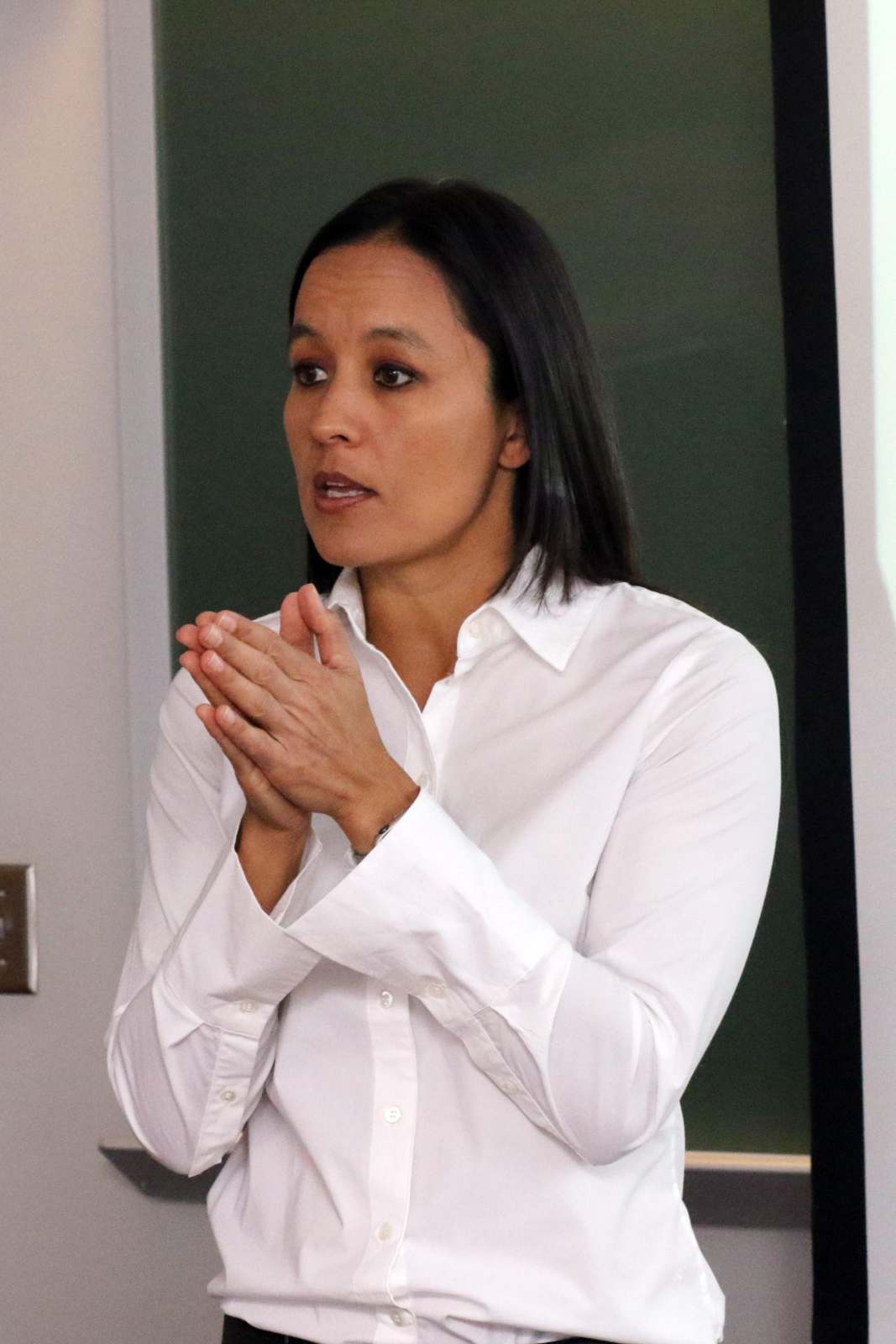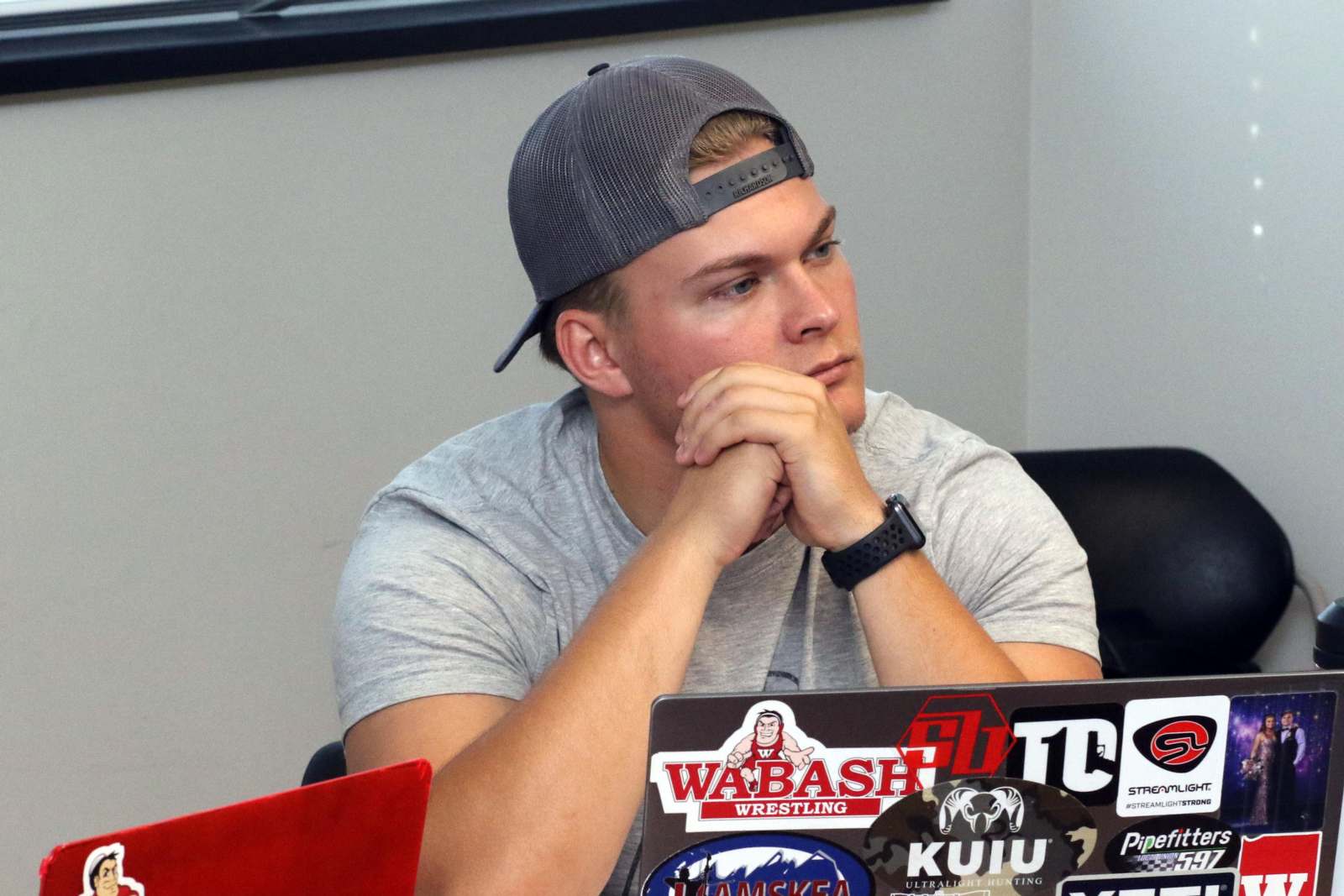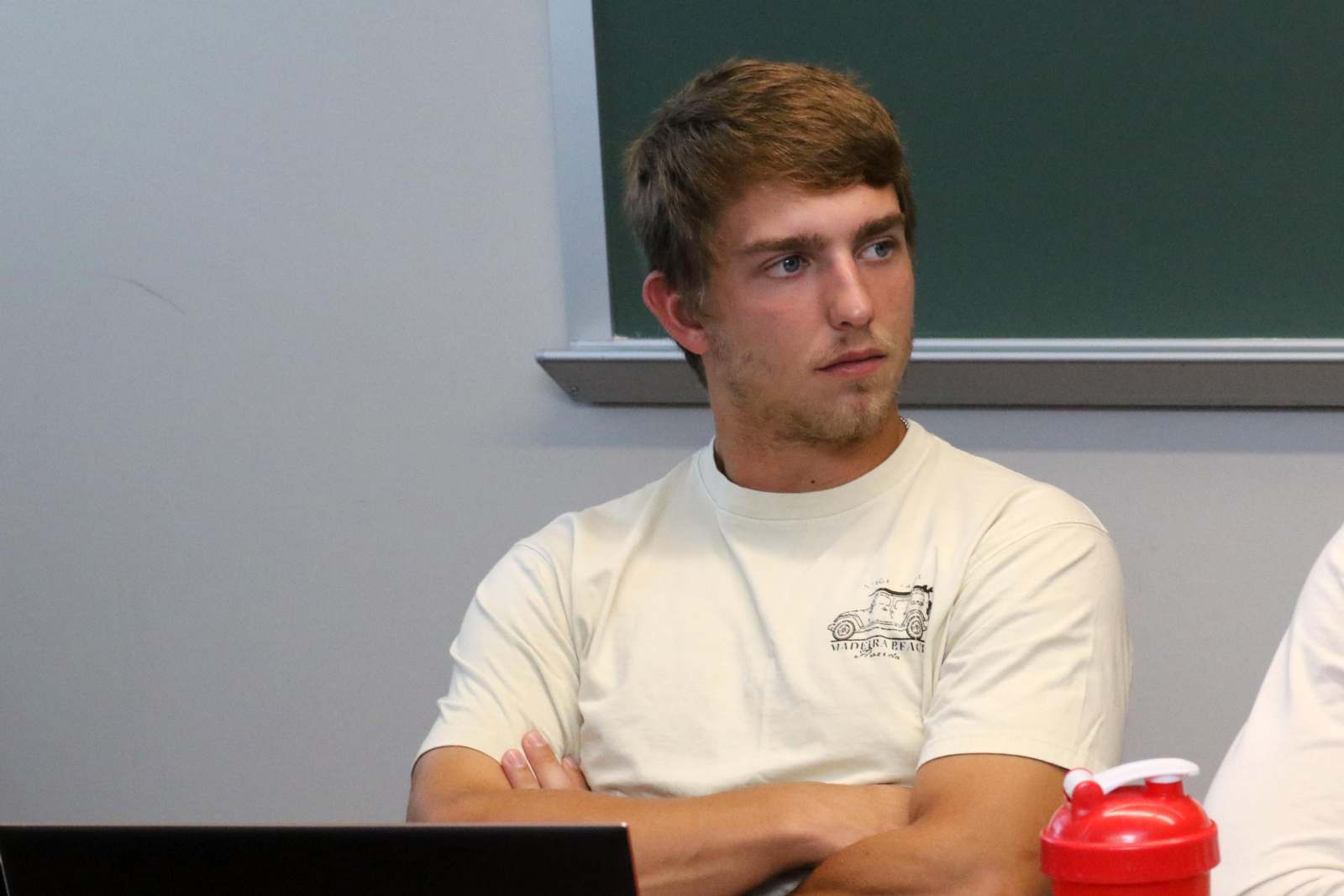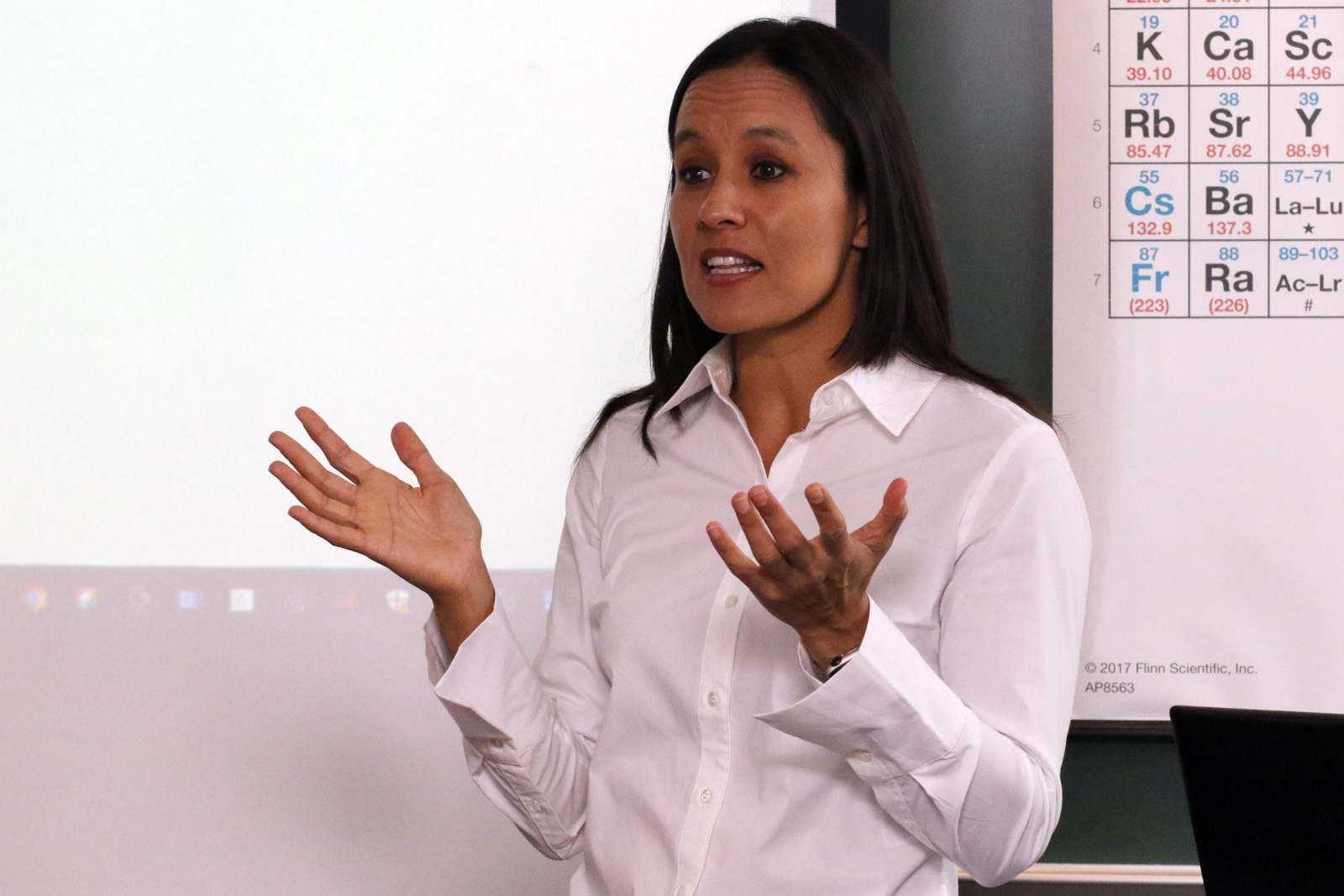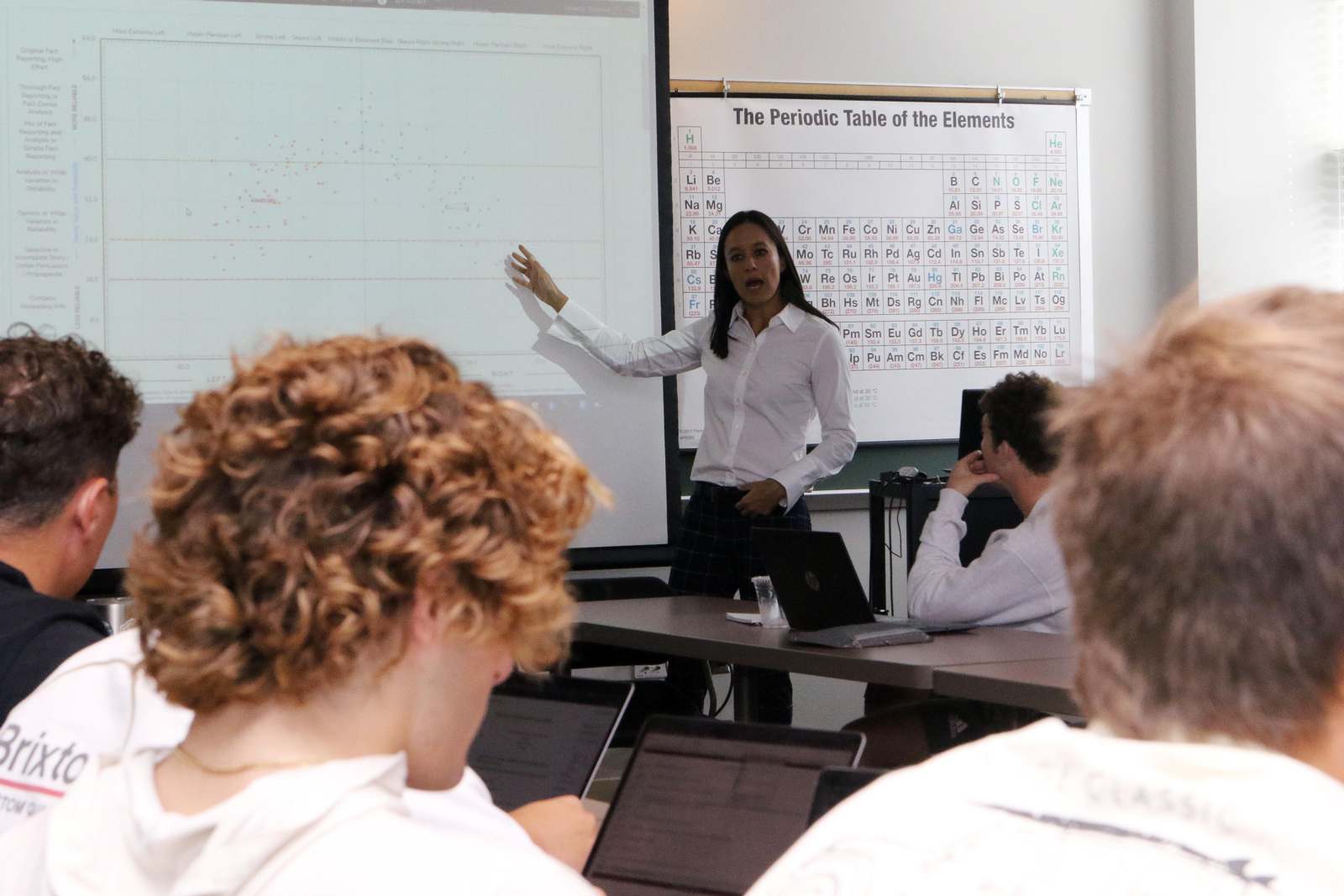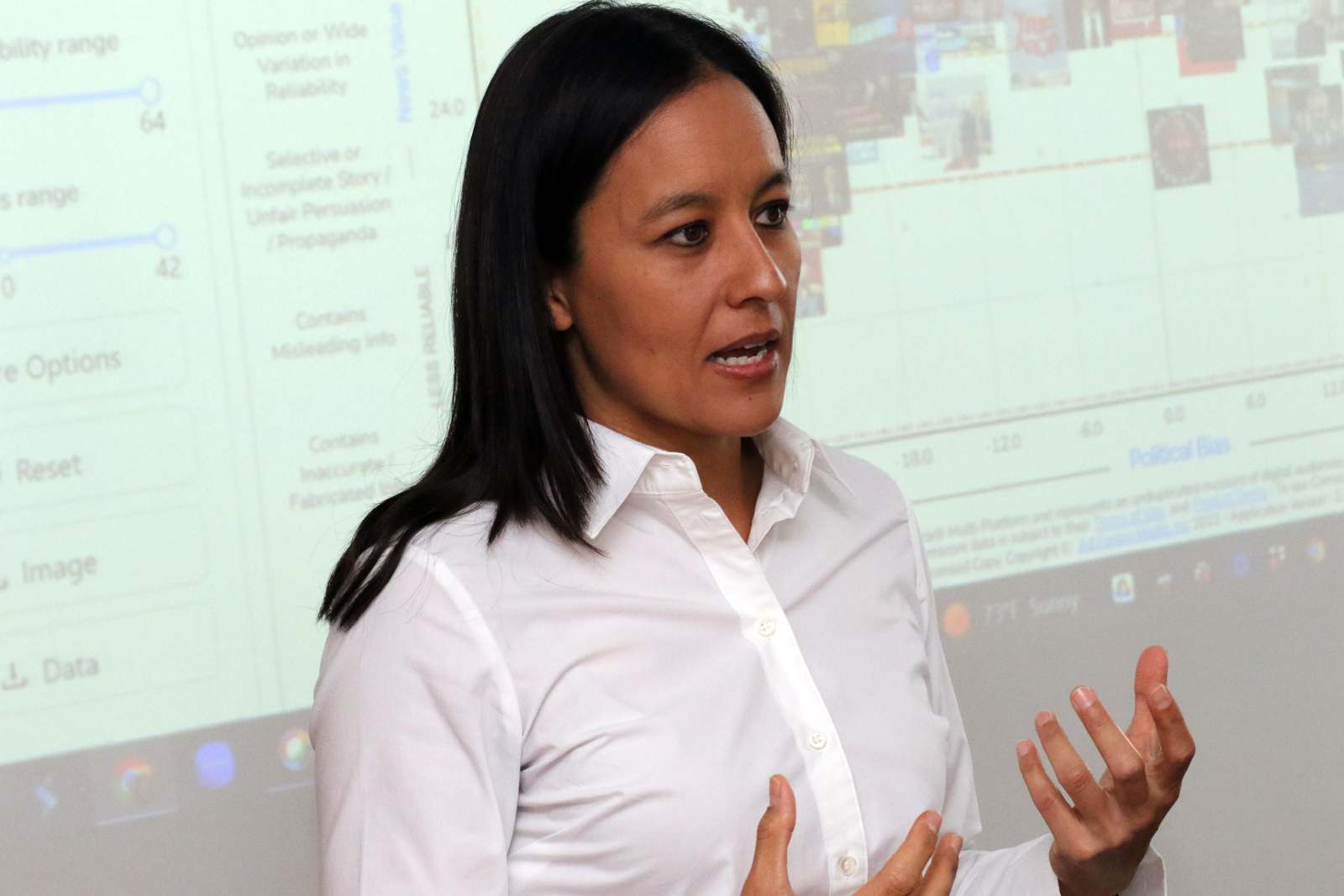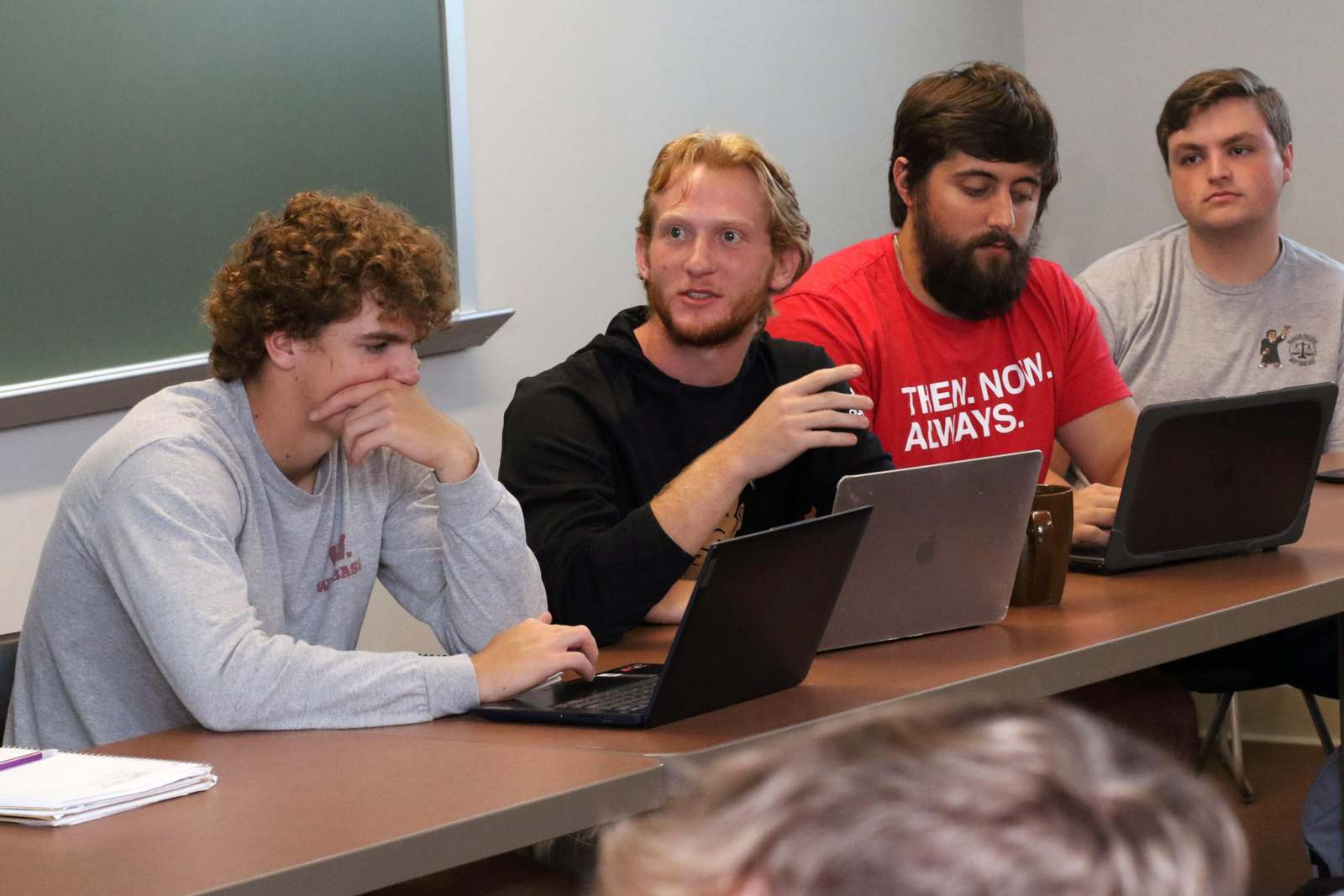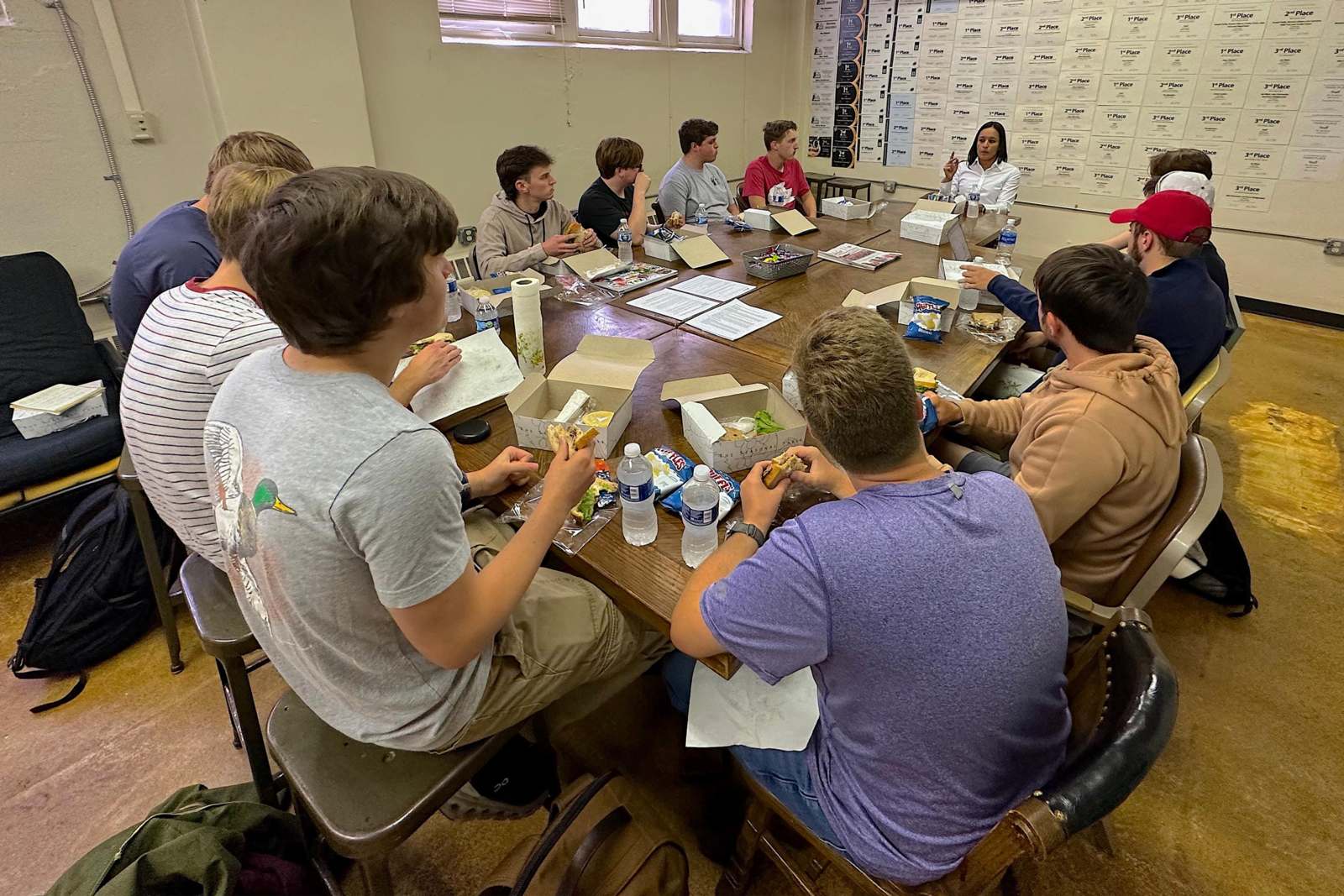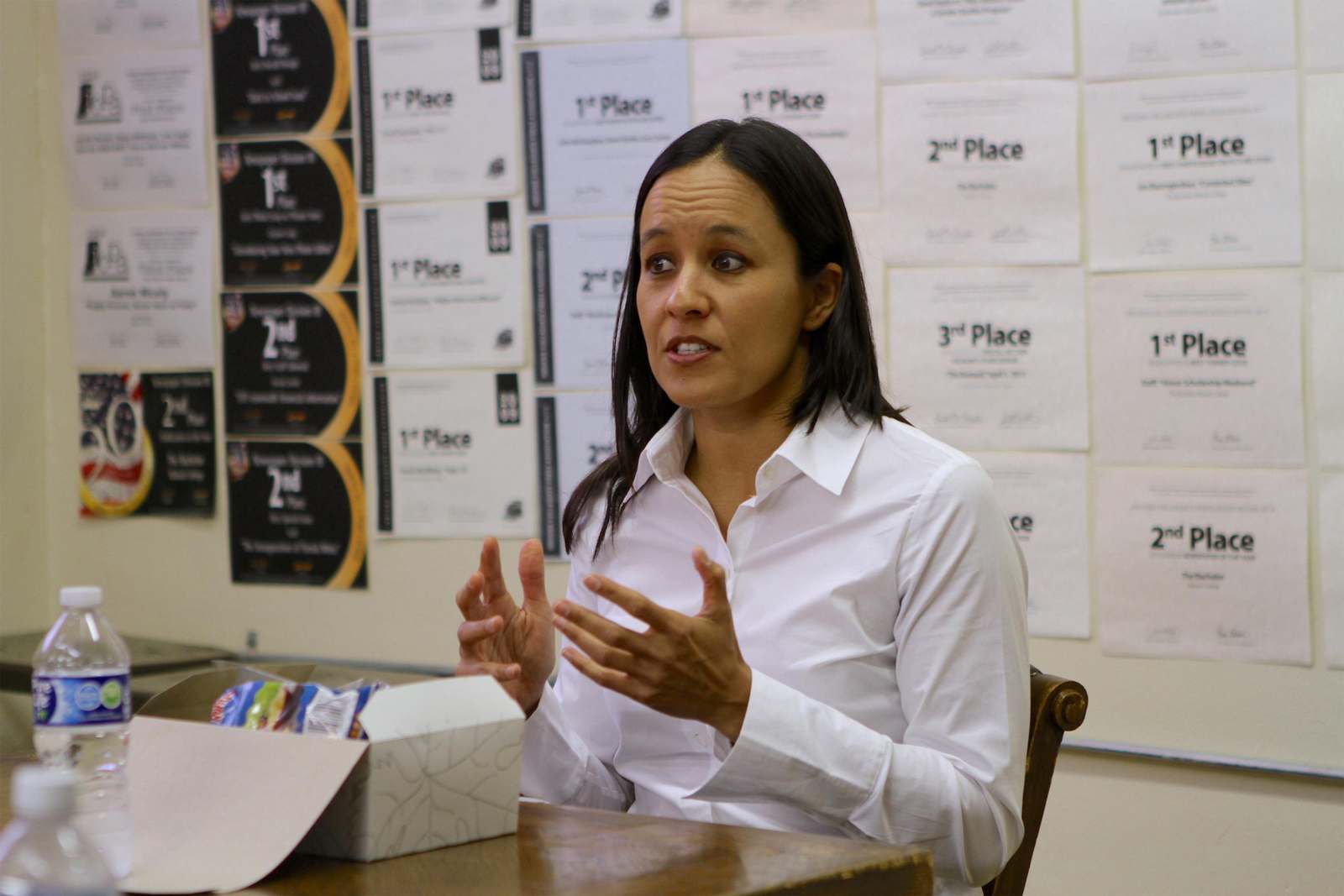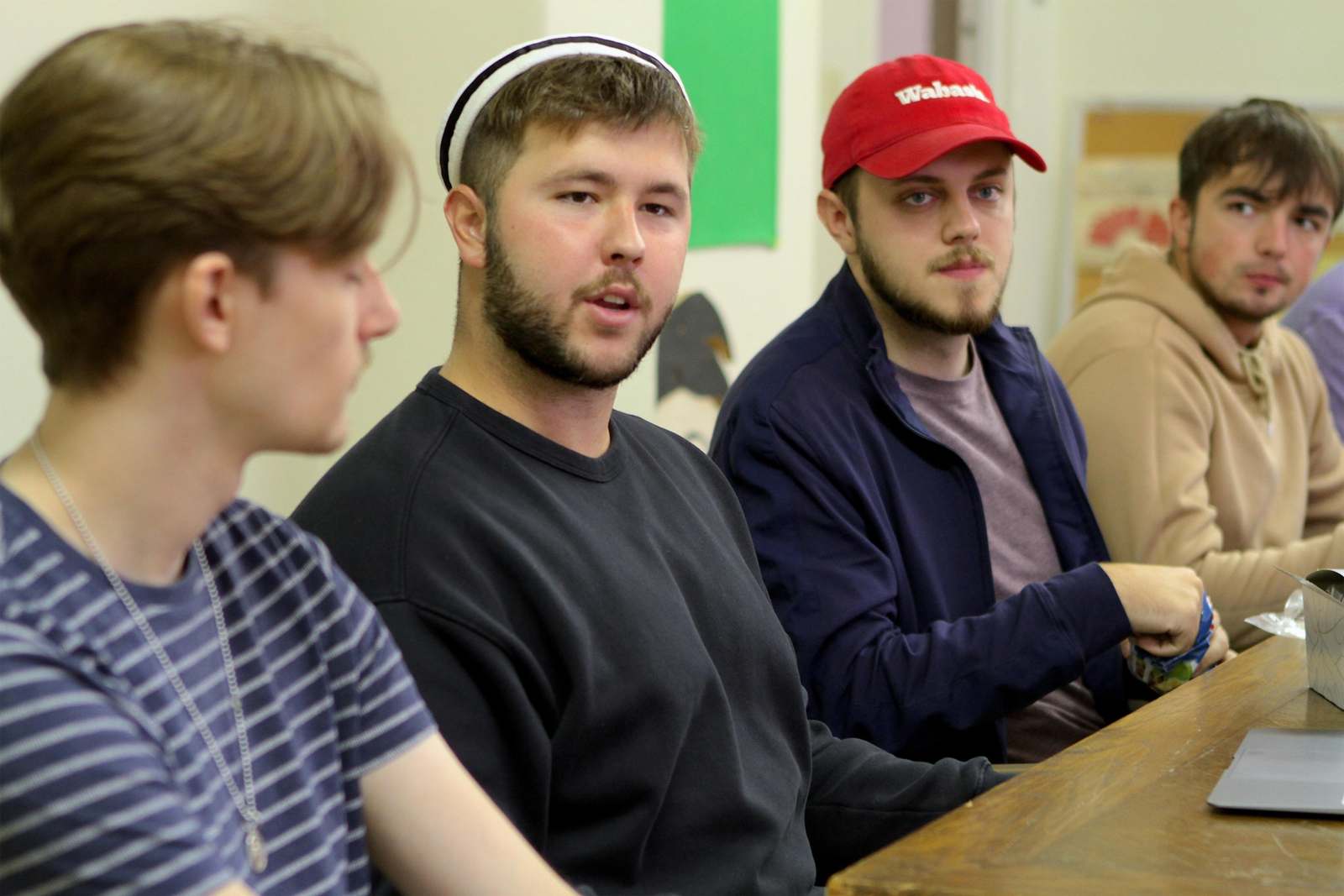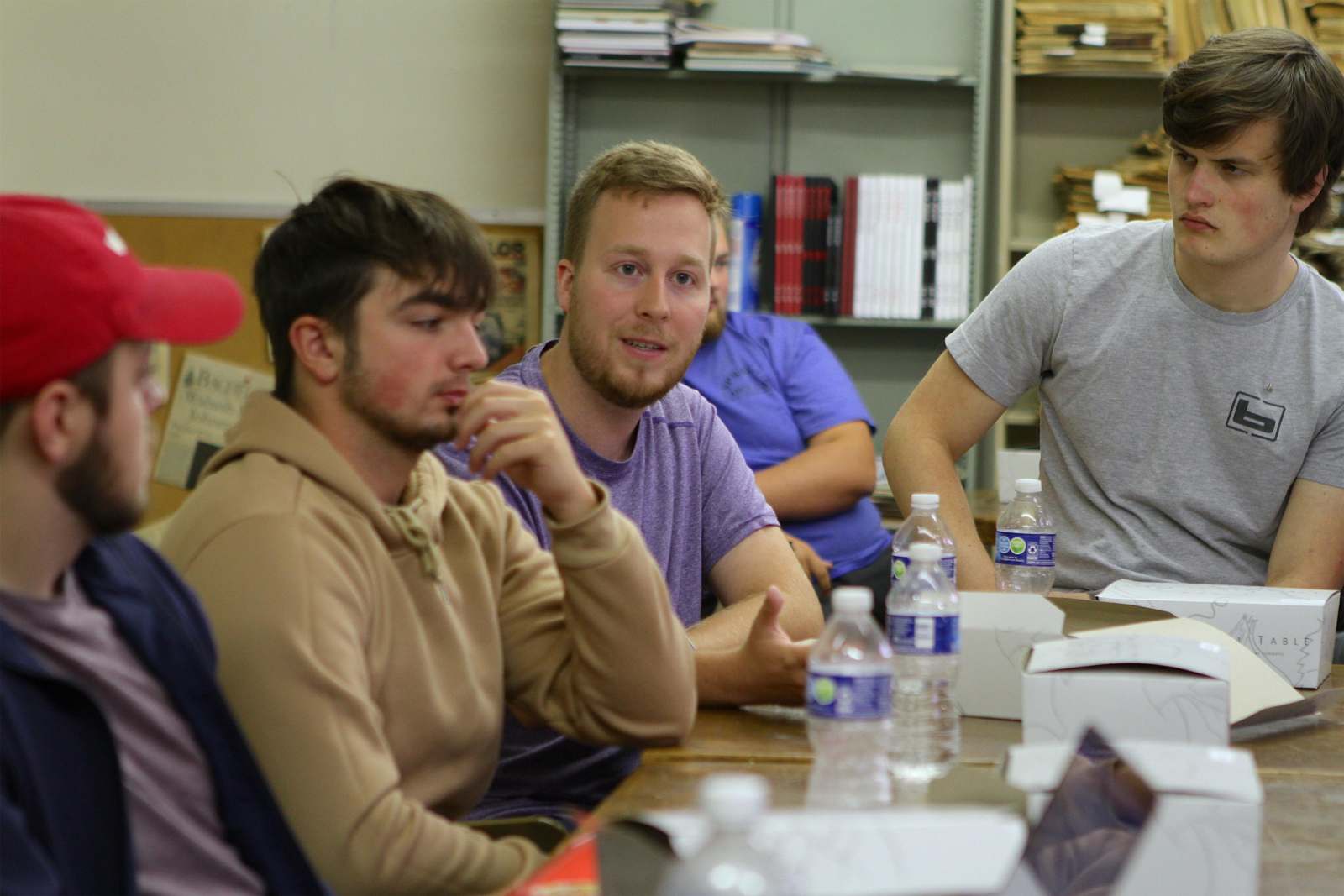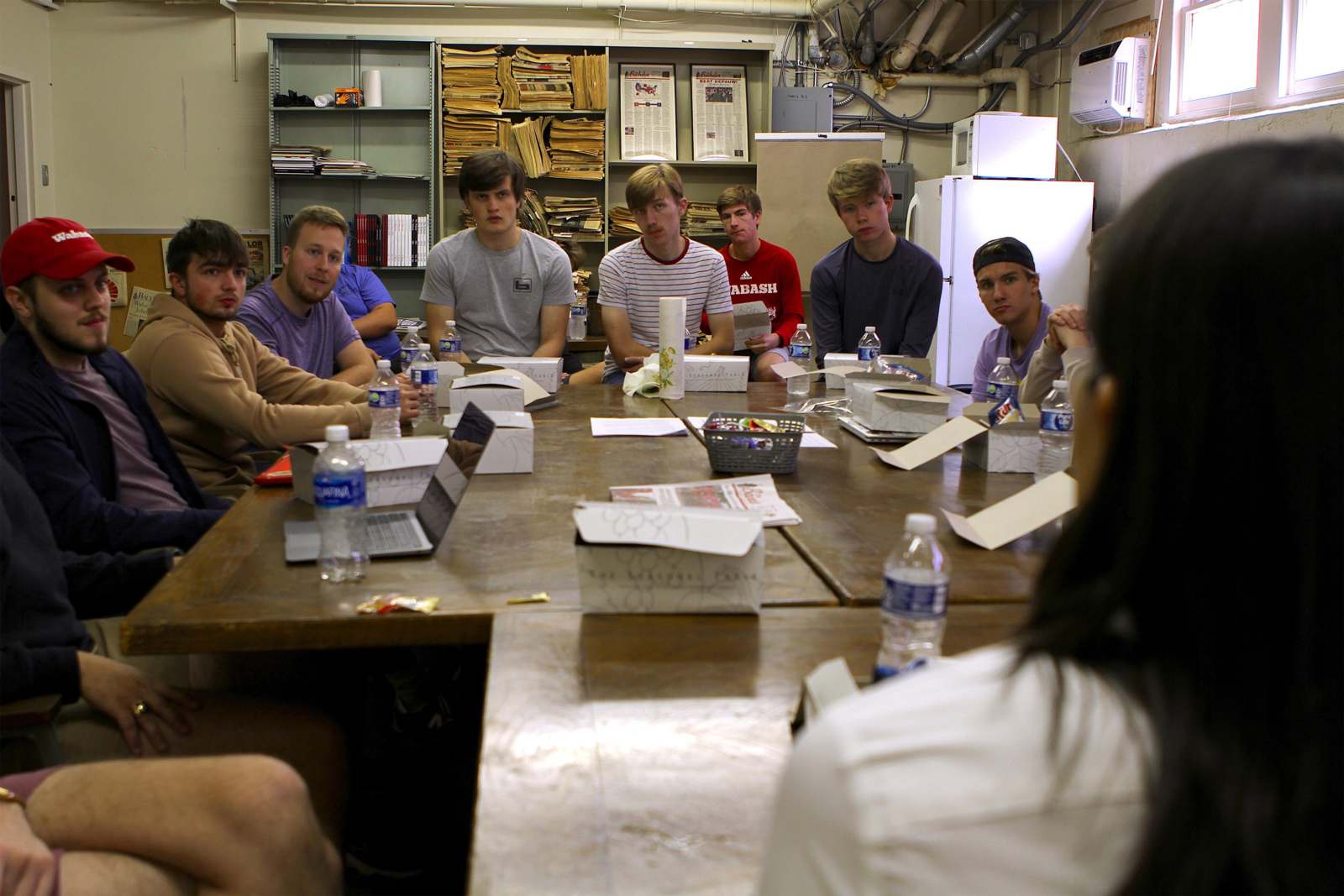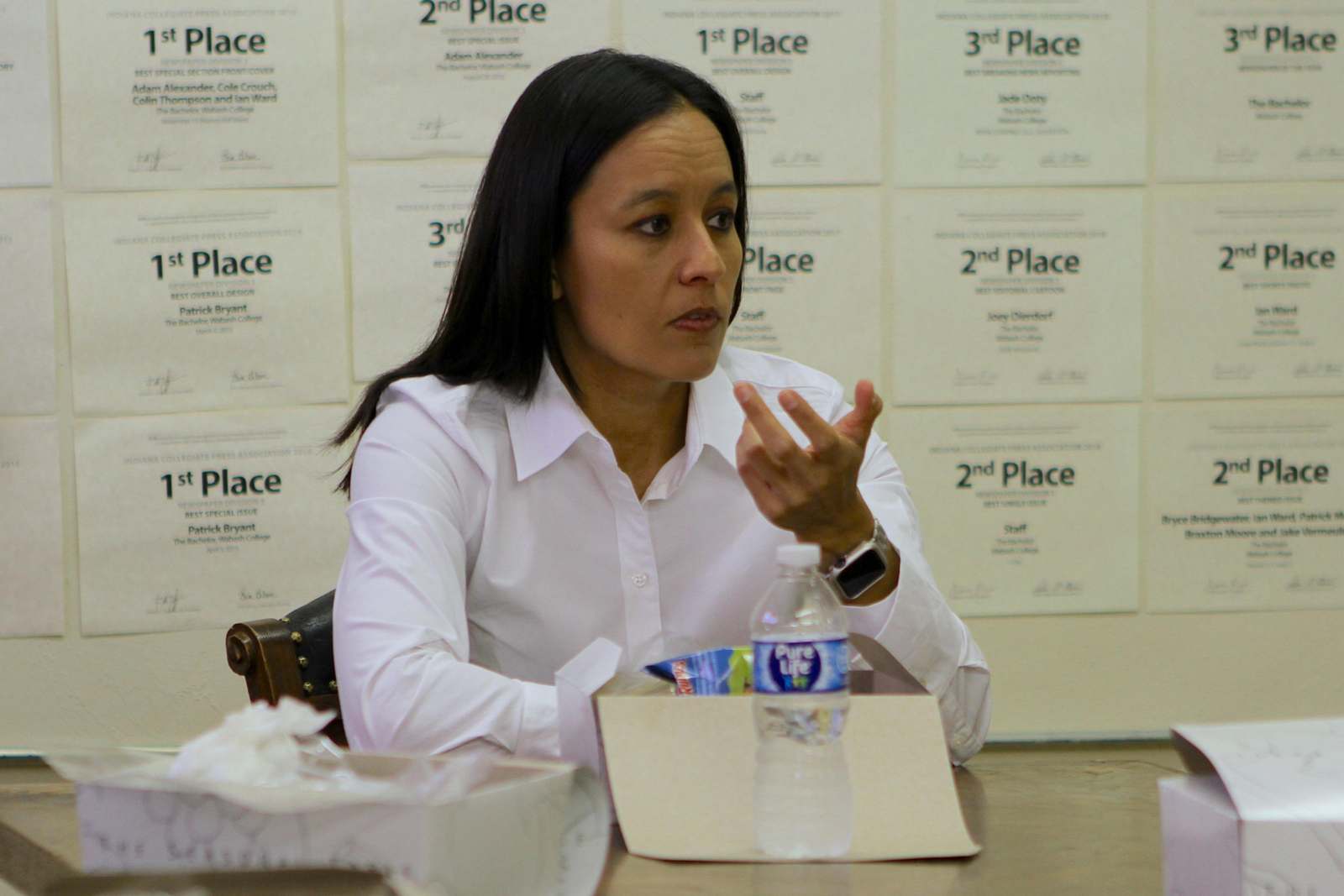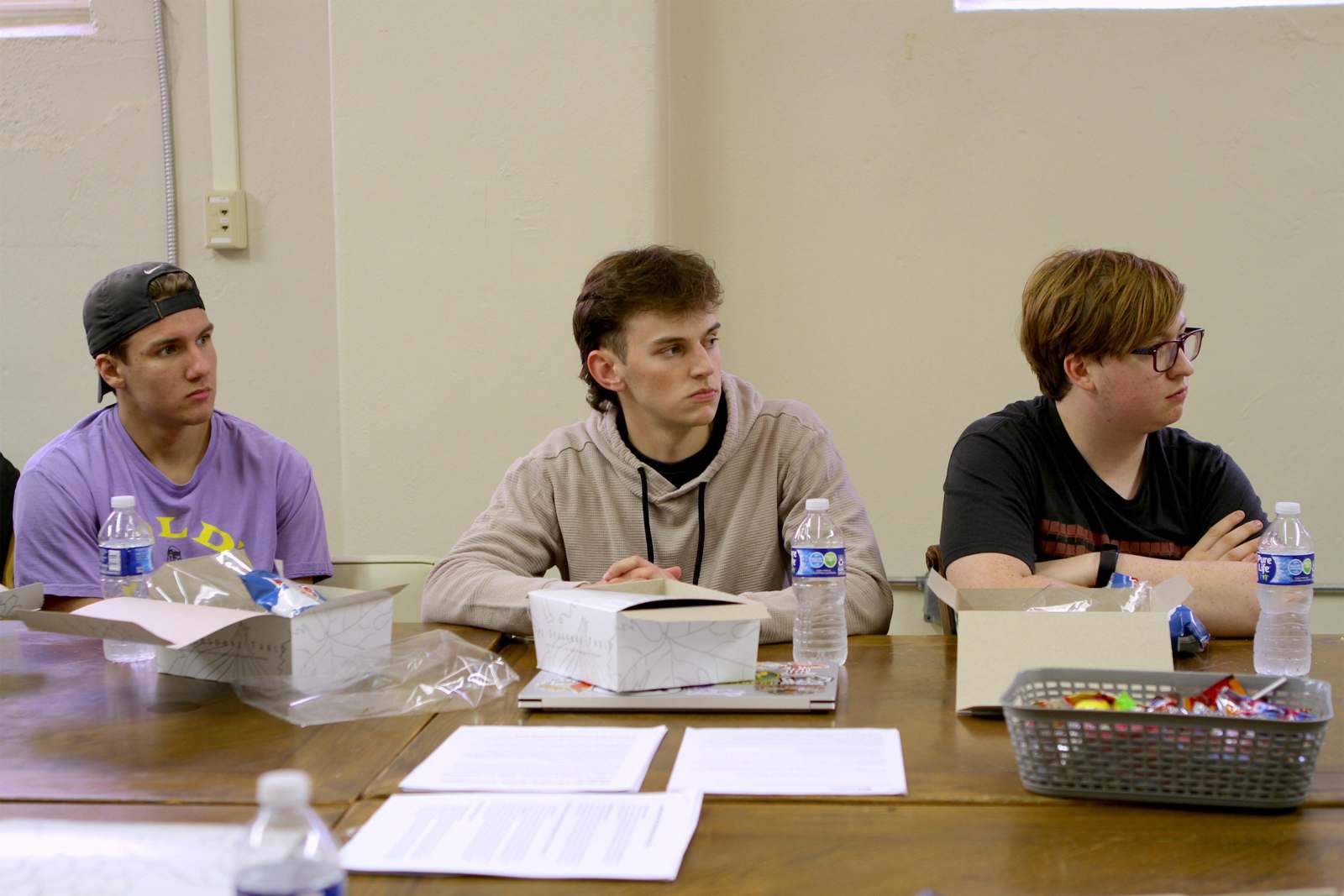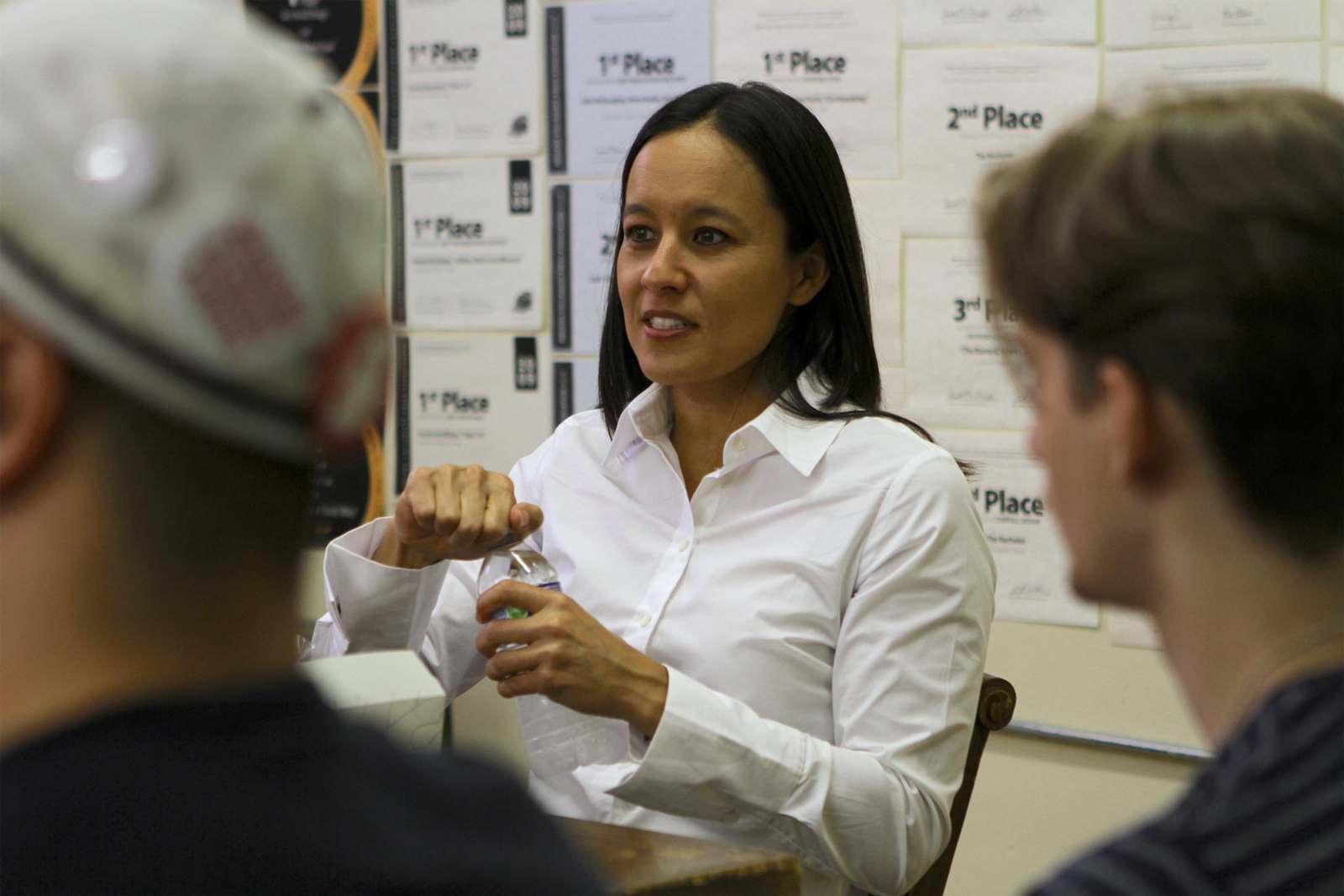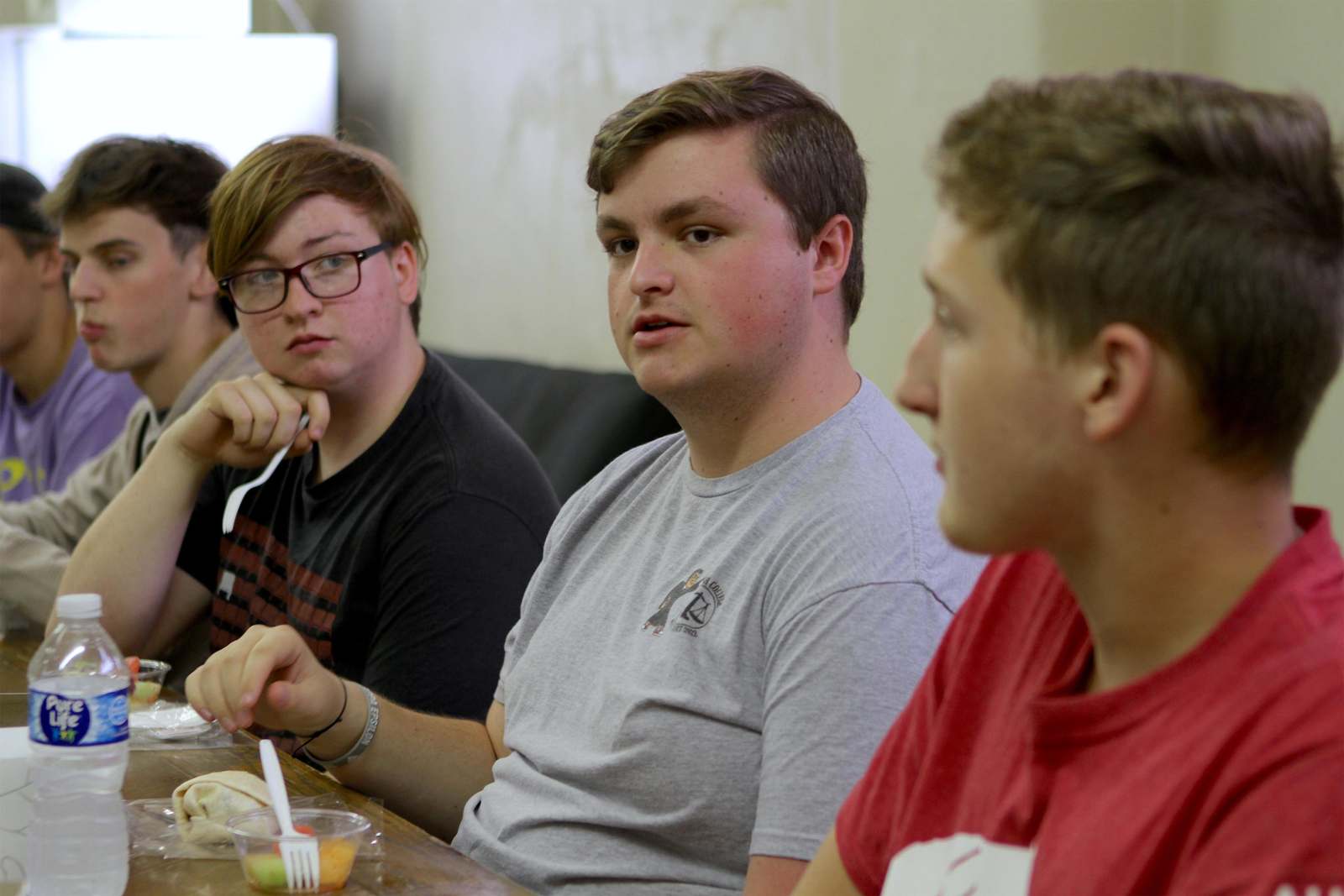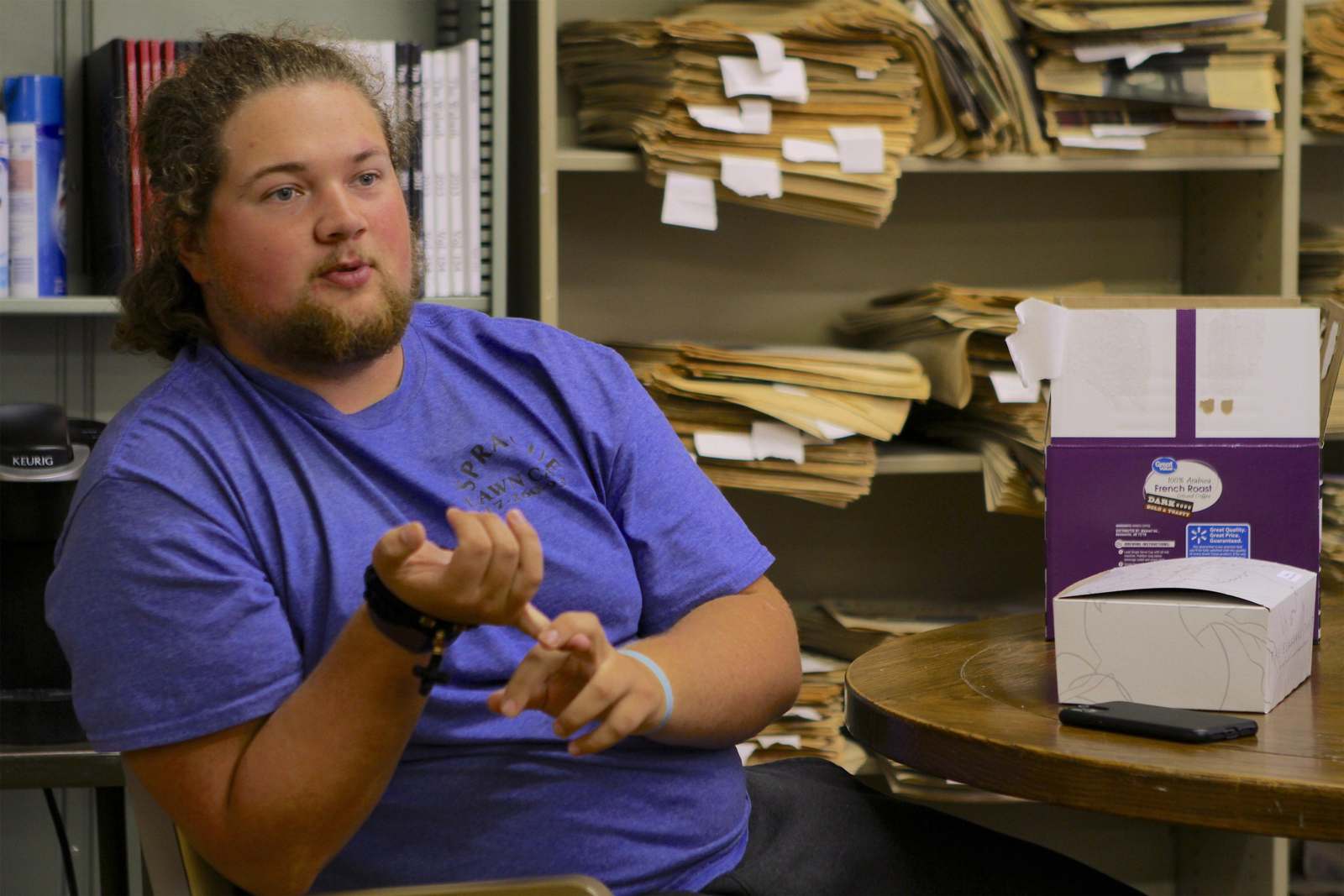PDSS Speaker Vanessa Otero
Vanessa Otero, the CEO and Founder of Ad Fontes Media and the creator of the Media Bias Chart, visited campus and interacted with students Sept. 19-20, 2023, as part of the President's Distinguished Speaker Series.
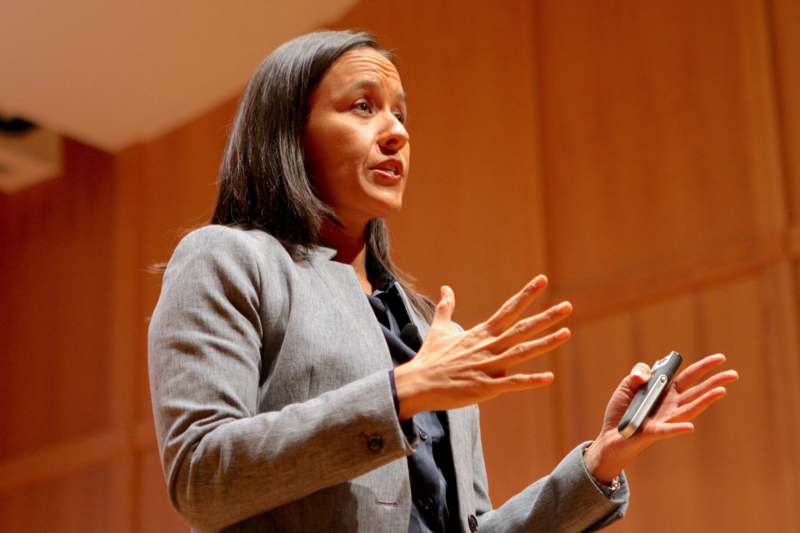
“I’m going to talk a lot tonight about how media content can divide and polarize us,” Otero said. “I’m going to invite you also to take a look at the kind of rhetoric that does mislead and polarize us, and see what you can do to rise up above it, develop the skills to make those connections because the more connected we are as fellow citizens, the better our society can become as a whole.”
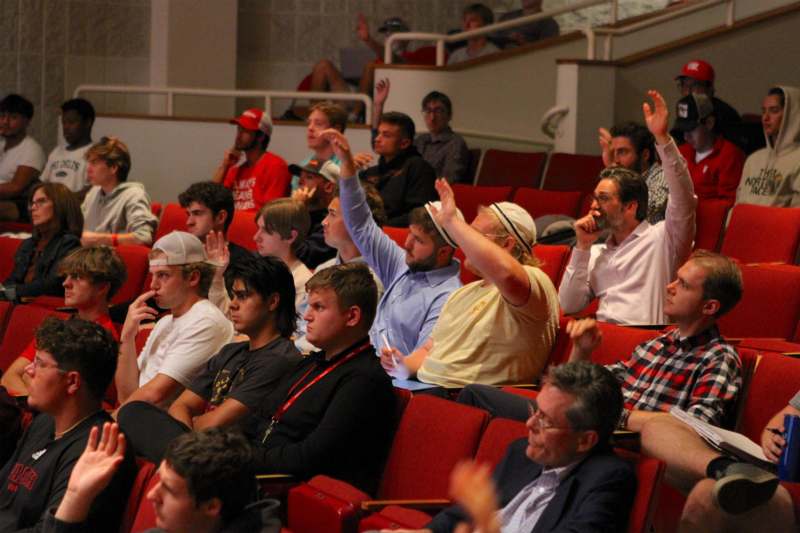
Otero was interactive with the crowd, and asked students, faculty, and staff to raise their hand if: they visit at least one actual news website or app every day and if they visit two or more; they actually watch a TV news program every day; they listen to at least one podcast every day; and they get their news from sources like YouTube. The questions were designed to force the audience to think about where they get their news and the diversity of sources they engage with.
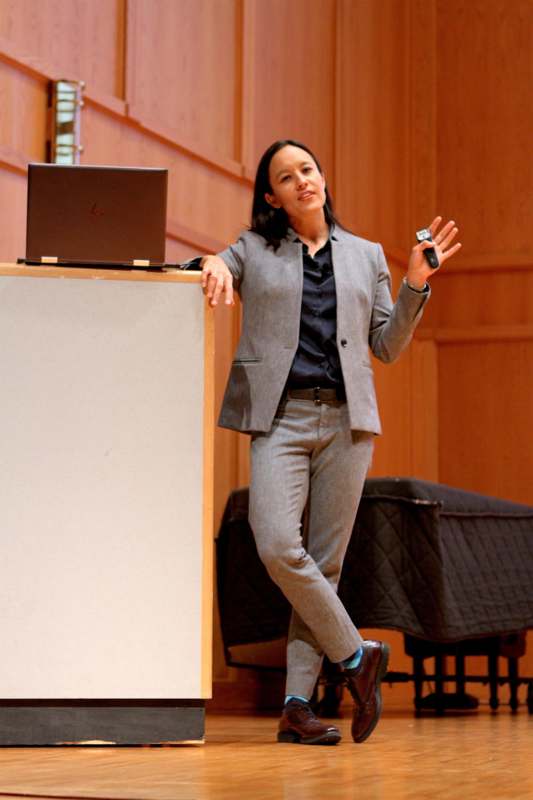
“At most people are consuming around 85 different types of content per day,” Otero said. “And usually, you’re consuming stuff you like, right? It’s stuff that you agree with, stuff similar to each other. You don’t typically consume news content that you hate. … The content that comes into your head directly affects how you think and how you act.”
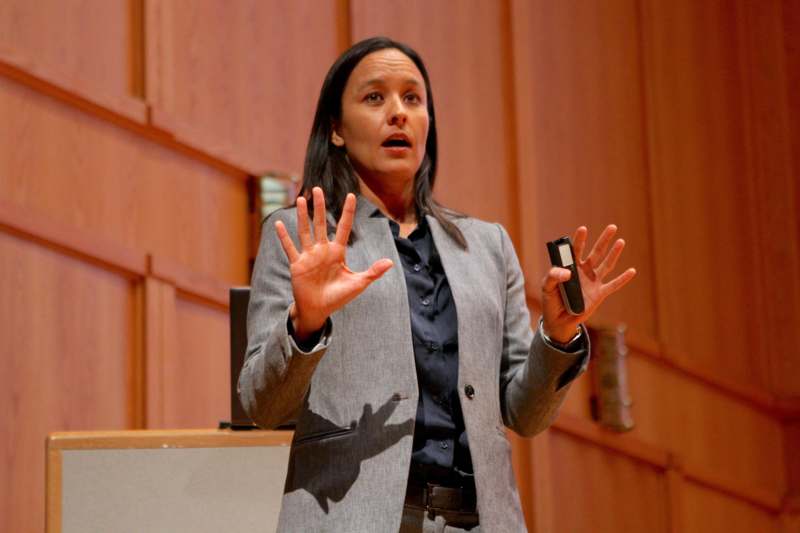
Otero gave tips on how to navigate the news and engage with people who may have different viewpoints. “Be kind. When you are facing someone about a topic that is difficult and you don’t agree with their point, don’t start the conversation with ‘You’re stupid and wrong,’” she said. “Being kind usually involves asking questions, getting specific, and finding out exactly where somebody got their information.”

She said of campus visits, especially to classrooms, "It's really helpful for me because I get to see what educators deal with on the frontlines every day. This is new--having tens of thousandss of sources--it is a relatively new phenomenon. I appreciated their questions. It's really helpful to come into college classes to see the generational differences."
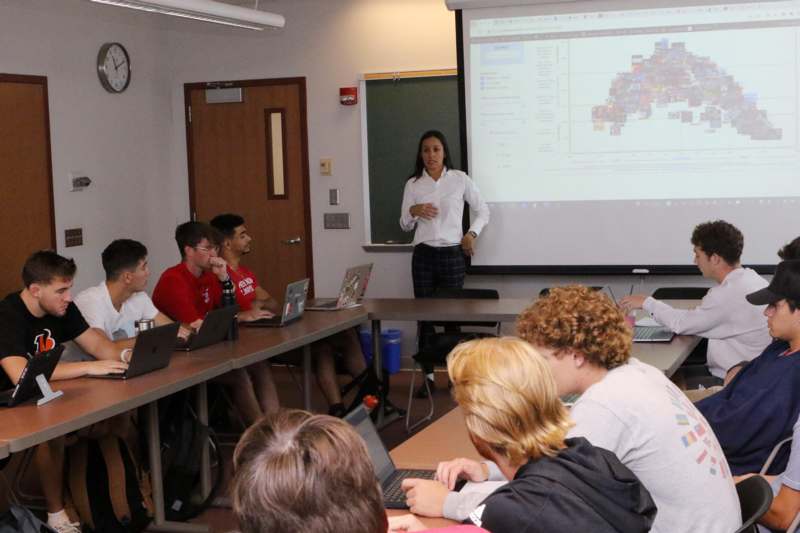
"There are folks of all ages who struggle with media literacy," she said. "It's a different challenge for somebody who is in their 70s, compared with someone who grew up with all the different types of, the handfuls of channels. The older among us at times will just take anything that they see on TV as credible, versus a generation now that grew up with so many more channels at their disposal. With screens and access to unlimited information, it gives me a lot of hope for the future to see the discernment and the skepticism that young people display."
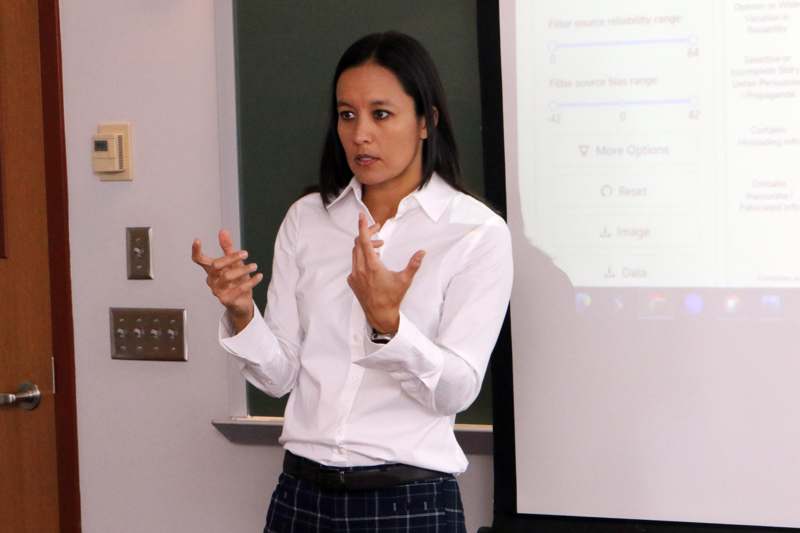
As the media bias chart has grown in influence, much to to hard work and a steady focus. she said, " It goes to show that you don't have to necessarily have a particular background to make change and lead in a space. I am a thought leader in this now, because I've spent so much time over the last seven years, really deeply dissecting and studying this issue."
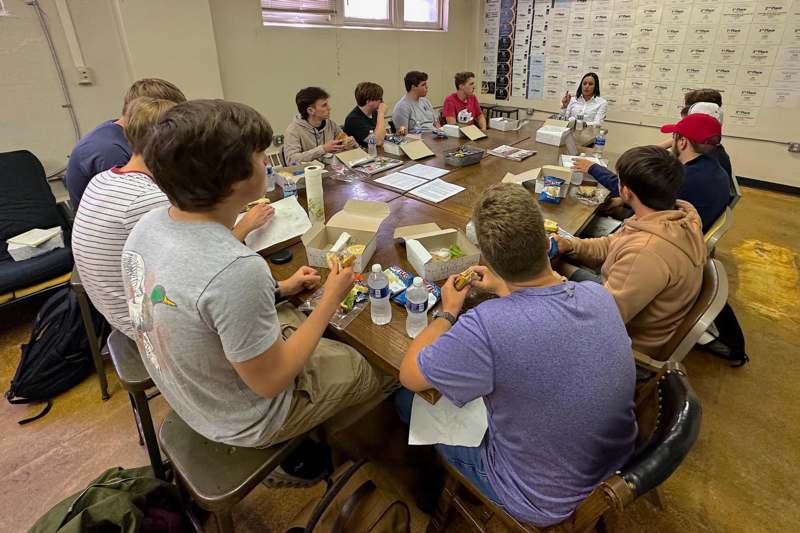
Otero’s visit on campus included a lunch and Q&A with editors and staff members of The Bachelor, Wabash’s student newspaper since 1908. She talked about the creation of the Media Bias Chart, how bias impacts journalism, and provided the student-journalists with tips on how they can improve their own reporting.

Otero’s visit on campus included a lunch and Q&A with editors and staff members of The Bachelor, Wabash’s student newspaper since 1908. She talked about the creation of the Media Bias Chart, how bias impacts journalism, and provided the student-journalists with tips on how they can improve their own reporting.

Otero’s visit on campus included a lunch and Q&A with editors and staff members of The Bachelor, Wabash’s student newspaper since 1908. She talked about the creation of the Media Bias Chart, how bias impacts journalism, and provided the student-journalists with tips on how they can improve their own reporting.
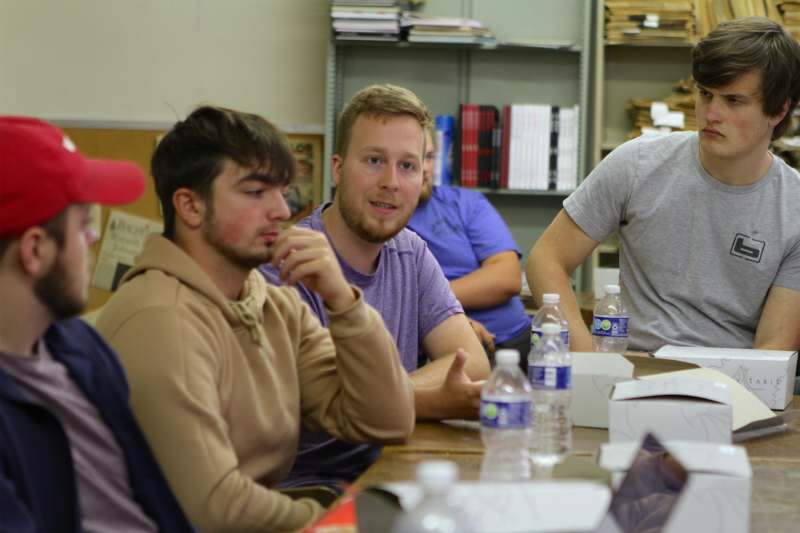
Otero’s visit on campus included a lunch and Q&A with editors and staff members of The Bachelor, Wabash’s student newspaper since 1908. She talked about the creation of the Media Bias Chart, how bias impacts journalism, and provided the student-journalists with tips on how they can improve their own reporting.
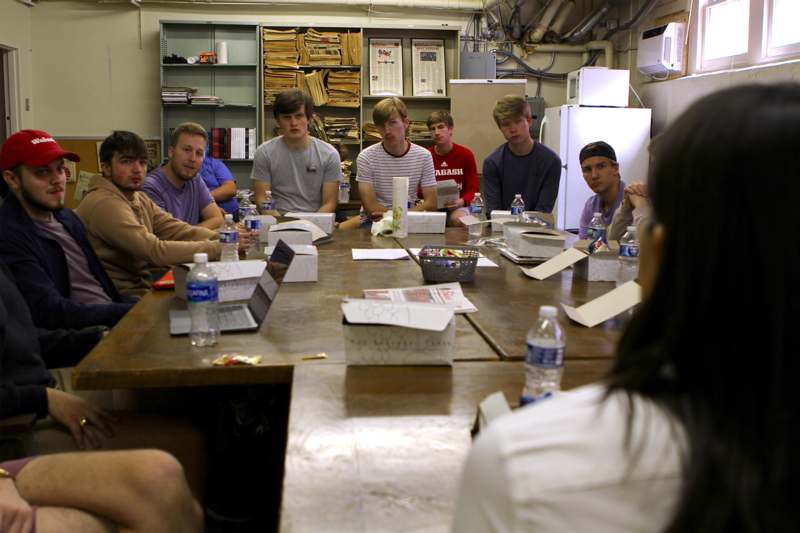
Otero’s visit on campus included a lunch and Q&A with editors and staff members of The Bachelor, Wabash’s student newspaper since 1908. She talked about the creation of the Media Bias Chart, how bias impacts journalism, and provided the student-journalists with tips on how they can improve their own reporting.
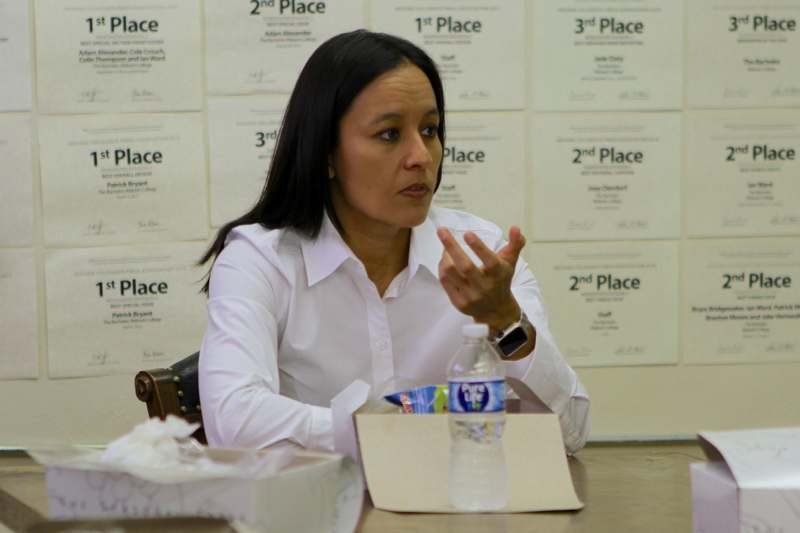
Otero’s visit on campus included a lunch and Q&A with editors and staff members of The Bachelor, Wabash’s student newspaper since 1908. She talked about the creation of the Media Bias Chart, how bias impacts journalism, and provided the student-journalists with tips on how they can improve their own reporting.
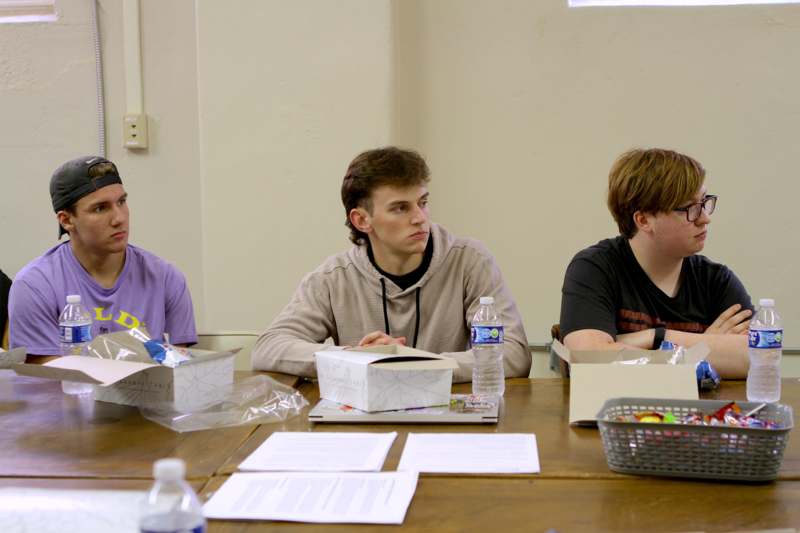
Otero’s visit on campus included a lunch and Q&A with editors and staff members of The Bachelor, Wabash’s student newspaper since 1908. She talked about the creation of the Media Bias Chart, how bias impacts journalism, and provided the student-journalists with tips on how they can improve their own reporting.
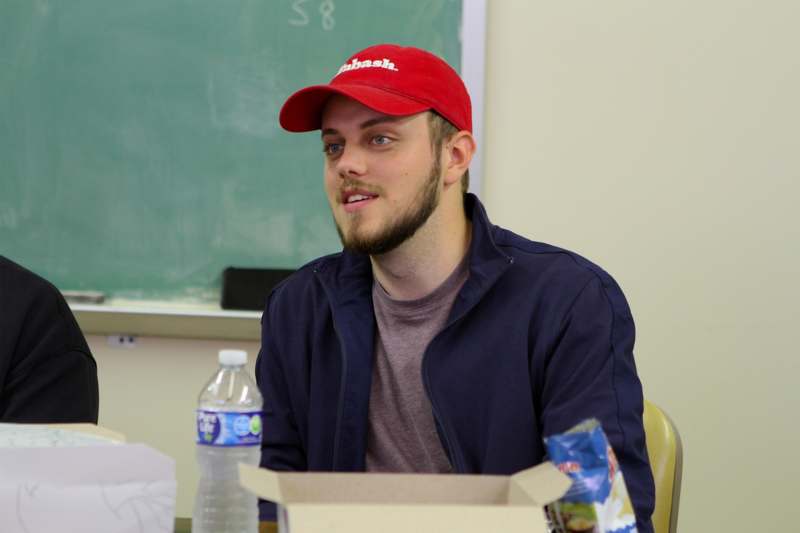
Otero’s visit on campus included a lunch and Q&A with editors and staff members of The Bachelor, Wabash’s student newspaper since 1908. She talked about the creation of the Media Bias Chart, how bias impacts journalism, and provided the student-journalists with tips on how they can improve their own reporting.
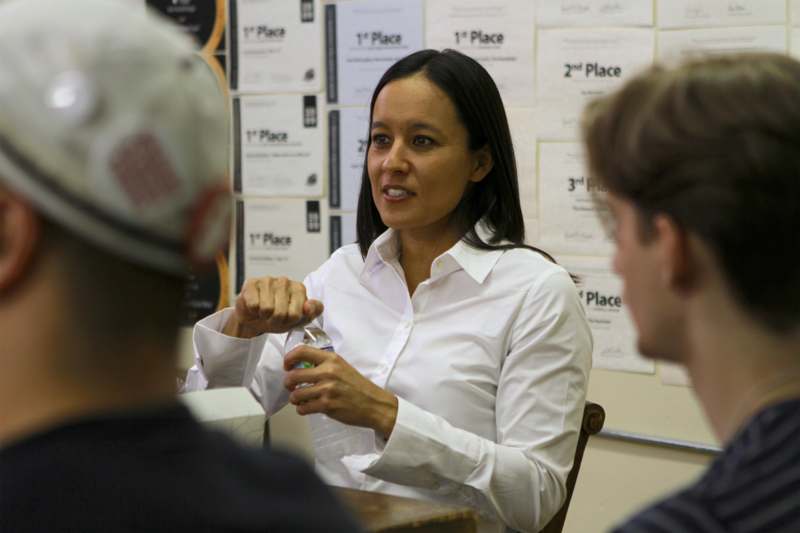
Otero’s visit on campus included a lunch and Q&A with editors and staff members of The Bachelor, Wabash’s student newspaper since 1908. She talked about the creation of the Media Bias Chart, how bias impacts journalism, and provided the student-journalists with tips on how they can improve their own reporting.

Otero’s visit on campus included a lunch and Q&A with editors and staff members of The Bachelor, Wabash’s student newspaper since 1908. She talked about the creation of the Media Bias Chart, how bias impacts journalism, and provided the student-journalists with tips on how they can improve their own reporting.
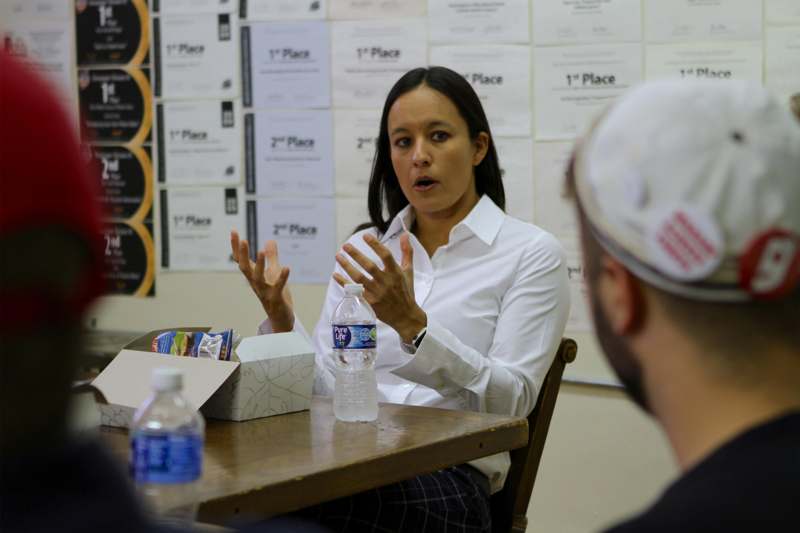
Otero’s visit on campus included a lunch and Q&A with editors and staff members of The Bachelor, Wabash’s student newspaper since 1908. She talked about the creation of the Media Bias Chart, how bias impacts journalism, and provided the student-journalists with tips on how they can improve their own reporting.
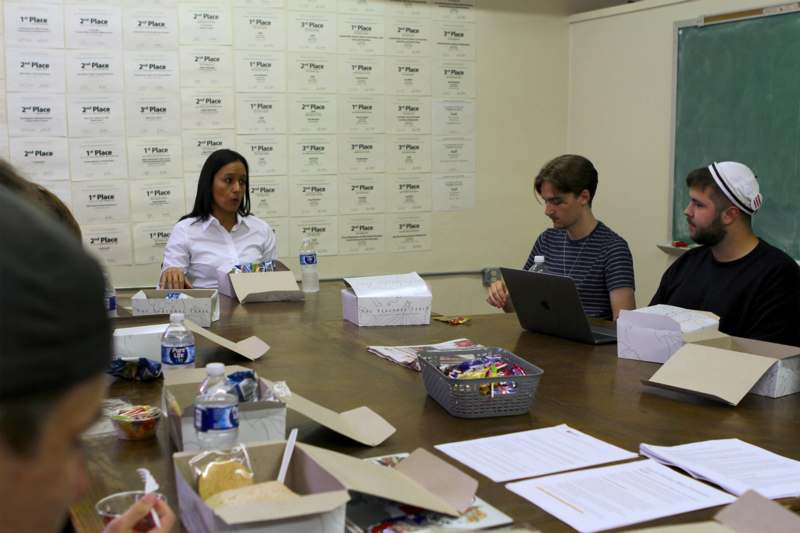
Otero’s visit on campus included a lunch and Q&A with editors and staff members of The Bachelor, Wabash’s student newspaper since 1908. She talked about the creation of the Media Bias Chart, how bias impacts journalism, and provided the student-journalists with tips on how they can improve their own reporting.
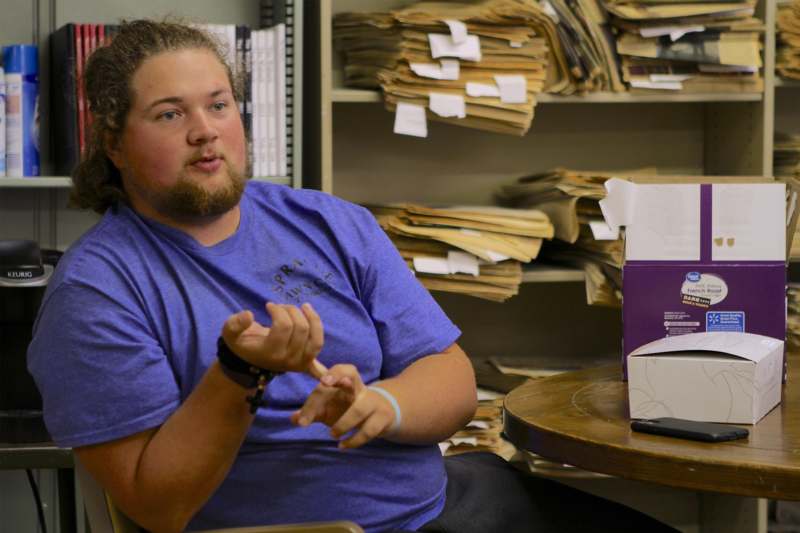
Otero’s visit on campus included a lunch and Q&A with editors and staff members of The Bachelor, Wabash’s student newspaper since 1908. She talked about the creation of the Media Bias Chart, how bias impacts journalism, and provided the student-journalists with tips on how they can improve their own reporting.

